



Why Luxembourg needs to be more vocal about what it does right in the investment funds sector














Why Luxembourg needs to be more vocal about what it does right in the investment funds sector









Oh, the poor Ucits. The liquid, retail-friendly investment structure has been the backbone of Luxembourg’s funds sector since the late 1980s. But in recent years it has been, in terms of net sales growth rates and PR buzz, eclipsed by private market funds. The main buzziness around Ucits that does exist these days has been around plain vanilla exchangetraded funds (ETFs), which are cheaper to run, increasingly domiciled in Ireland and not Luxembourg, and I imagine less profitable to manage.
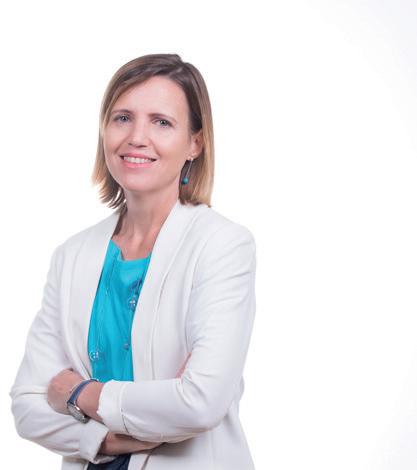
Wednesday 15 May
For this edition, I had the opportunity to sit down with the Association of the Luxembourg Fund Industry’s new director general, Serge Weyland, in his first proper grilling by the press (see page 32). I went into the interview expecting to hear about how private market funds were shaping the local market, but Weyland surprised me. While not discounting the growth potential of private market funds, Weyland said, “I still believe that Ucits have a bright future” and specifically actively managed Ucits.
His argument was two-fold. Passive ETFs are typically very US-centric, with portfolios often tracking 80%-100% US equities. Such overexposure can present “an idiosyncratic risk by having the herd mentality” at play, Weyland stated. On the other hand, active funds provide a more diverse set of investment options.
Improved digital distribution will eventually draw in a “broader set of investors”. That’s where passive funds still have the advantage. “Today, the reality is, if you log on to Revolut or Swissquote, it’s easy to invest into a passive ETF, because it’s an ETF. It’s right there, you push the button and you can buy it. If tomorrow all your active funds are available through these platforms, that will attract new flows of money that currently is not invested in funds.” That is why he expects that “Ucits have a big reason to grow.”
Words AARON GRUNWALD For event information and registration, visit delano.lu/club Luxembourg’s private banks manage some €600bn in assets, but face significant challenges as digitalisation and personalisation take centre stage. This roundtable features, among others, Ananda Kautz of the Luxembourg Bankers’ Association (ABBL), pictured, Pascal Martino of Deloitte and Isabelle Waty of Indosuez Wealth Management.



FINANCE
8 PHILIP BROWN
“T+1 brings uncertainty to securities lending market”
60 FRANÇOIS CHAUVET
European Fund Trophy winners
66 CRYPTO-ASSETS
Getting ready for Mica
76 ESG RATINGS
Coming EU rules
BUSINESS
12 LOREN DANESI
“If you’re missing diapers, it’s for right now!”
86 MICHEL NICKELS
How much landlords can raise rents in Luxembourg
POLITICS
14 ANNE-MARIE NICOLAS & VÉRONIQUE HOFFELD
Bankruptcy law provides new options
22 ROBERTO MENDOLIA Trade union Aleba’s plans to go national





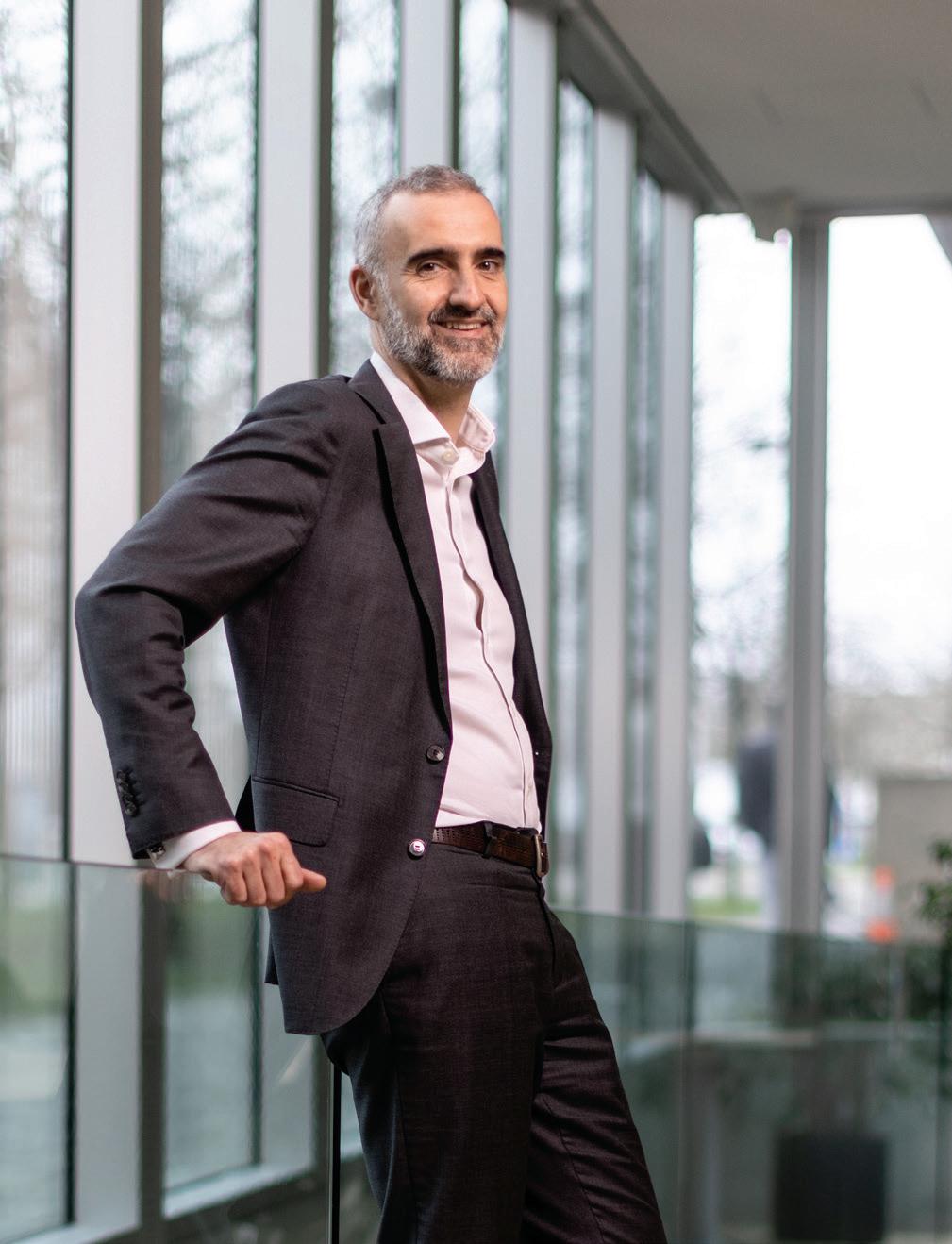



Clifford Chance is the market-leading law firm advising global fund sponsors seeking to facilitate access for European non-professional investors to alternative assets.




The Clifford Chance team provides exceptional legal and commercial input. They clearly stand out in the market.
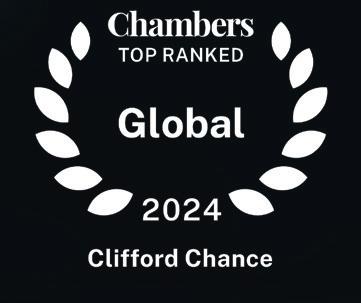



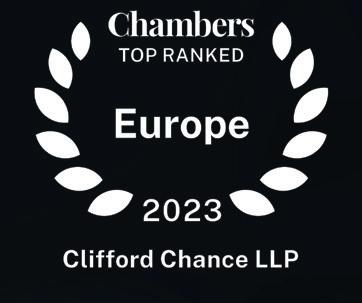



















As the US moves towards reducing the securities transaction settlement cycle from two business days after the trade (T+2) to one (T+1), Philip Brown spoke about the challenges ahead for Clearstream and its clients.

What are the main challenges of moving to T+1 settlement in the US by May 2024, and how is Clearstream preparing?
We have to separate the move to T+1 into two separate issues. One is the technical ability to cope with T+1, and the second is the ability of the businesses--and I don’t just mean our business, but we have to think about Clearstream as a vehicle through which our clients do business--to cope with T+1. So, let me address the first question. Technically, there’s no change needed for us. We run a real-time settlement platform today, and a majority of our settlements are already settled in T+0, meaning the same day. So, in that regard, a move to T+1 for us is not significant from a technical perspective.



Could you estimate Clearstream’s T+0 settlements?

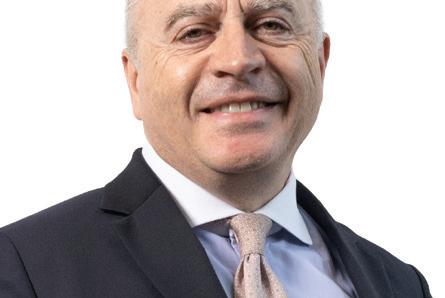






percentage of the investments of Asian clients are in US dollar instruments, as the US is by far the world’s largest capital market. So anybody that’s investing cross-border is likely to have a US investment in their portfolio. And there are two main impacts on these clients due to the T+1 shift. The first is the timezone di erence, which means in a T+1 environment, they have less time to resolve settlement issues discovered during their day. This is particularly challenging for clients running batch processes, which can only be executed once a day. The second issue involves the foreign exchange market, which settles in T+2. This misalignment means clients needing to secure US dollars for investments must plan in advance or face potentially unfavourable currency exchange rates.

Are there any other challenges you foresee?

For the cluster of Luxembourg business, it’s north of 40%. And the reason for that is a lot of our settlement volume is related to the movement of collateral, and collateral moves on a same-day settlement basis.
So, there is no material impact on Clearstream?

Technically, from our business perspective, there’s no impact at all. See, we support the Chinese market, which is already at T+0. We supported the European markets when there was a mixture of T+3 and T+2, and the Indian market settles at T+1. So, we already support an array of more than 60 markets worldwide, each with di erent settlement protocols. From our perspective, it doesn’t really a ect our ability to run our business day-to-day if one market or a number of markets change their settlement cycle. The impact is more on customers.
How so?

The biggest impact will be on clients that are not based in Europe or the United States. A large




Yes, there is a third impact, true for all clients. The shift to T+1 brings uncertainty to the securities lending market. The way securities lending works is that if I lend out my securities and then decide to sell them, I have to recall them. With T+1 in the US, the recall period becomes shorter, requiring securities to be returned more quickly. So, I think there’s an unknown impact on securities lending.
Philip Brown, CEO of Clearstream Banking, a securities services provider, says the shift to T+1 settlement in the US will not directly a ect Clearstream’s operations, but it will impact its clients, especially in Asia.


 Interview KANGKAN HALDER Photo GUY WOLFF
Interview KANGKAN HALDER Photo GUY WOLFF














“We took advantage of SNCI’s proInnovate programme, which is dedicated to companies that innovate in their sector by bringing to market new, highquality, reliable, and increasingly eco-responsible products.”

For us, entrepreneurship is made of a wide range of different projects, all of which stimulate and diversify Luxembourg’s economy. We support all entrepreneurs through our financial programmes. Do you have a business project that you would like to make a reality? Then don’t hesitate to contact us.
More information on snci.lu/en I / snci supporting entrepreneurship
Claude Maack GRADEL proInnovate








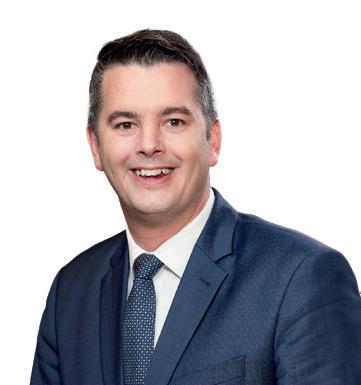






+5.000 attendees
+1.200 guests at the closing seated dinner
+200 start-up exhibitors


+200 speakers
11.000 m2 surface area





+70 exhibitors
3 Villages and 4 stages



 Eryka Lehr Strategy & Operations Google
Gilles Roth Minister of Finance
Lex Delles Minister of Economy
Xavier Bettel Deputy Prime Minister
Eryka Lehr Strategy & Operations Google
Gilles Roth Minister of Finance
Lex Delles Minister of Economy
Xavier Bettel Deputy Prime Minister

















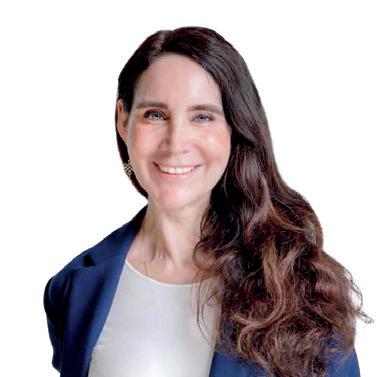

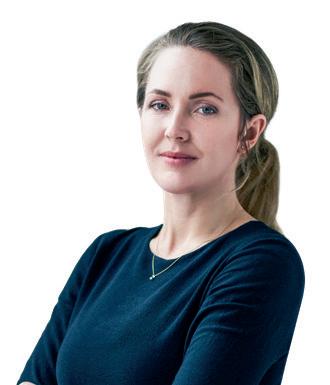























How does the app work?




Food (and goods) delivery service Wolt has come to Luxembourg. Loren Danesi, general manager for the country, explains the app and how Wolt plans to compete.

We have three main stakeholders: merchants (restaurants and stores); courier partners; and customers--we thus have three interconnected apps.
For the customer, it’s an intuitive and very easy-to-use app which shows all the restaurants and shops that are open from where you are located right now, and what is available--you order what you want, see how much it costs and how long it takes to be delivered, and then you pay. And you have a live tracker.

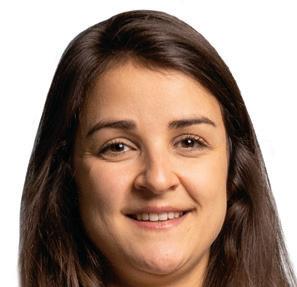

How do you make money?





We have two sources of revenue. The first one is the customer, who pays delivery fees. And the second is the stores and restaurants, which pay a commission for being on the platform and using our delivery service.

On the merchant app, you receive orders, which you can accept or reject. When you accept it, you’re asked to confirm that you can prepare it in the previously determined average time. If you’re overloaded, you can say: sorry, I need five more minutes--then click and it updates the customer app, so everyone sees the progress in real time.


On the app for courier partners, you will get a delivery o er based on your location and see how much you can get for it--it’s super transparent--and you can accept or reject it. You know the distance, the restaurant, where to go… and you can connect whenever you want.




It’s not only restaurants, right?
Right. The idea is to deliver anything you need within 30 minutes. Imagine your fridge is empty-you didn’t buy any groceries--you can check our app and find a convenience store that can deliver your groceries (milk, eggs, anything). Or your iPhone cable is lost and Amazon delivers in 12 hours but you need it now.

Or diapers: in general, if you’re missing diapers, it’s for right now!



Luxembourg is the 30th country of operation for Wolt and Doordash [editor’s note: the latter acquired the former in 2022]. What challenges do you anticipate in this marketplace?

The first challenge was to have an excellent portfolio of restaurants for the initial launch. And it’s done; we’re happy.

And during this whole process, if you have any problem, our support team is always in the background. They will help you--merchant, courier partner, customer--at any stage and will answer your query within one minute.

 LOREN DANESI
LOREN DANESI



If I’m understanding correctly, the courier partners are all freelancers? How does it work for them?
They apply, then sign a service agreement with us. And what makes it super flexible is that they connect when they want, for how long they want. Usually the average in Europe is approximately ten hours per week that they connect, i.e. are working.


Danesi, 31, joined Wolt to oversee its launch in Luxembourg and run its operation here. “We’ve already had great experiences in similarly sized markets like Iceland and Malta,” she says. “We believe we can recreate that success.”




[Editor’s note: at the time of writing, some 200 restaurants are on the platform.] The second challenge is to have the right number of courier partners… we have to secure customer experience first. And the last one is Wolt’s name here in Luxembourg--not everyone knows it. We have to build an awareness of the name.

 Interview JEFF PALMS Photo GUY WOLFF
Interview JEFF PALMS Photo GUY WOLFF

For Anne-Marie Nicolas and
Véronique Hoffeld from Loyens & Loeff, Luxembourg’s new bankruptcy and business preservation law brings a “rescue culture.” But there are “blind spots” in the law and more judicial certainty is needed.Words LYDIA LINNA
Luxembourg, as of 1 November 2023, has a new law that focuses on business preservation and the modernisation of bankruptcy law. It gives other options to companies in distress, explained Anne-Marie Nicolas, a partner at Loyens & Loeff who heads the law firm’s banking & finance practice.
This new law, which implements EU directive 2019/1023 on preventive restructuring frameworks, emphasises the fact that companies now have options to restructure their debt. While options did exist before, these were not very efficient and thus were not often used.
There is also a “preventive process,” said Nicolas, and “there is a whole toolbox that was added to our legislation that allows companies to sort of ring the alarm bell to say, ‘I’m in trouble. Can someone look into my situation?’” The company can also discuss potential restructuring options with creditors.
With this new law, “there is a real rescue culture that could be implemented in Luxembourg. That was not the case before--it was pretty brutal,” said Nicolas.
“We had a very old-fashioned system,” added Véronique Hoffeld, partner and head of the firm’s litigation & risk management practice group. “In a case of bankruptcy, the receiver would try to sell as much as possible--and as quickly as possible--and then to close the bankruptcy. So you would lose a lot of value from your assets. That was a downside--no second chance, and also loss of value.”
The new law brings restructuring options, the “rescue culture” and the “cramdown” mechanism, which is when creditors can be forced to accept a restructuring.
“That makes a huge difference in practice, because you rarely have 100% of your
“We also don’t have the judicial certainty that other countries have now”
ANNE-MARIE NICOLAS
creditors on board once you want to restructure. So you need that mechanism to bind those who don’t agree,” said Nicolas. “We’ve seen it in other countries. That works really well, and we have that now. That, for me, is the biggest advantage.”
“One interesting new procedure is also that--as a creditor, or even a third-party that has an interest--if you see that there are irregularities in the management of the company,” you can ask for a provisional administrator to be appointed, noted Hoffeld. This existed before, “but you needed to actually prove that there was a blockage of the company. And that’s sometimes difficult to prove. Here, you have an additional procedure that’s in place.”
“It’s obviously not yet tested, because it’s a new law. I’m not aware of any case law, which is normal because the law dates back to November 2023. But we have one procedure ongoing,” said Hoffeld. “So that’s another new tool.”
But for Nicolas, Luxembourg’s new law, voted on by parliament in July 2023, was done “in a bit of a rush.” There was a risk of sanction from the EU if the restructuring directive was not implemented and the national elections were coming up. “The drafting was not perfect. There are some blind spots--quite a few, actually.”
It is, for instance, based on Belgian law, “which is not the most competitive law in terms of restructuring, but also has a different market--Belgium is more centred on industrial and operational companies.” Luxembourg does have operational companies, but it also has a lot of special purpose vehicles and funds, she noted. So some elements are not “completely aligned” with other legislation, which may create “interpretation issues” in the future.
And “because we are late in the process of implementation, we also don’t have the judicial certainty that other countries have now. For example, if you look at the restructuring proceedings in the Netherlands, in England, in France, in the US, even in Germany--they are tested, so people know what to expect,” said Nicolas. “In Luxembourg, we don’t have that advantage because it’s new, it’s late and it has blind spots. Time will tell.”
“Because there are so many blind spots and room for interpretation, I think that the judges will have a lot of leeway to interpret that law. So it all will depend very much on case law,” said Hoffeld.
A case brought to court in November 2023-after the law came into force--concerns an
entrepreneur in the real estate industry who made a request for reorganisation but seems to not have acted in good faith, said Hoffeld. The entrepreneur did, however, get the reorganisation. “The court decided that you do not have to prove your good faith-you just have to prove that there is risk for the continuation of the business.”
“That’s a bit astonishing,” said Hoffeld, adding that she thought it could “open the door to bad-faith entrepreneurs.”
The law’s scope remains quite open. “The entry requirements are unclear,” said Nicolas. “You don’t have to actually come up with a tonne of documents and justify yourself, which is also quite different from what you have to do in other countries.” Luxembourg’s new restructuring law also allows for the filing of a “stay,” which Nicolas explained as an “interruption--if you want--of enforcement rights for your creditors.” Once again, the company doesn’t have to provide a lot of justification. “And because of that effect that the filing has, it’s a massive incentive for companies who are either fighting with the creditors or don’t know what to do with themselves, to just file to get the stay, and to interrupt any kind of enforcement actions.”
It’s not necessarily a bad thing, added Nicolas. “Creditors, in a sense, might have had too much leverage on this point, and also because our bankruptcy procedure was
Luxembourg firms entering liquidation are more likely to be older outfits
Less than 5 years
More than 5 years
brutal,” she said. “But now it’s a bit the other way around. So we don’t know exactly if it’s going to balance out the sort of brutal bankruptcy procedure or if it’s going to just be abused all the time.”
Time will tell
“It will very much depend on the courts and how they implement those requirements,” said Nicolas. “The law is not precise enough that you can say--with certainty--this kind of company can file, this kind of company cannot file, is this stay abusive or not? That’s really for the practice to figure out.”
The blanks will have to be filled in. If the law is applied in a “pragmatic way, then it can be a huge advantage,” said Nicolas. But “we can’t say in advance to our clients how it’s going to go. The law isn’t precise enough. So we completely rely on the courts, and we don’t exactly know which way they’re going to go. It could go both ways.”
“It really depends a lot on the judges, on their way of applying the law,” concluded Hoffeld.
“I think it’s important to know as much as you can”
After studying music management, Astrid der Weduwe thought that maybe finance could rock when she arrived in Luxembourg in 2014. After several sales positions, she moved to Kieger, a healthcare asset manager, to manage investors relations… and more.
 Astrid der Weduwe handles investor relations for healthcare investments at Kieger
Astrid der Weduwe handles investor relations for healthcare investments at Kieger
How do you help the investors?
I provide them economic data on the healthcare industry and ask my portfolio managers to write quarterly updates on where we stand, the driving factors of the industry and the upcoming catalysts. It is also important to keep investors aware of the market developments given the unusually low valuations of 2023 as we see rebound in 2024.
Is it important for you to know in detail the company you are investing in?
I think it’s important to know as much as you can. It’s about our company, our values and about the products. We need to be able to give a full presentation about the products and the companies that we invest in. It is our job to promote our product into the market and to shield portfolio managers so that they focus on managing the portfolios.
What are the current and the upcoming challenges for this role?
There are so many asset managers out there. As a small asset manager, you really need to go out there and be an advocate for the brand. The markets are super volatile on the back of economic and political challenges. In the recent past, investors suffered from the fear of missing out (FOMO) whereas now I feel there a fear of messing up (FOMU). Let’s hope that we get out of that cycle because people are very reluctant [to invest].
What is the point of having someone in investors relations in Luxembourg instead of a larger neighbour?
I believe you need both. Because a lot of companies have a presence in Luxembourg, you still need to meet the final decision-makers locally. It’s very important from the IR point of view where the decisions are being taken and who are the right persons to talk to.
What developments in the market have affected your business the most in your seven years in the role?
Regulatory constrains have tightened up. They added more and more costs, a challenging development for a small boutique. We want to grow but we need to
manage our budget carefully. When targeting a market, we need to be clear about our strategy and account for registration costs, additional reporting, etc. AI will help the IR person because a lot will be taken over on the admin side like mailing lists, the CRM system that we must maintain. Positively, we’ll be able to move more into the people side, which is what we’re here for.
What type of attitude is needed for the job?
One must be organised, openminded, persevere and be very consistent in your job. A personality trait that is also very important is the capability to build relationships and maintain them afterwards.
“You see a sector from all sides”
What type of trainings have been helping you in your role?
I did the CFA investment foundations programme to get [a better understanding] on how the figures are constructed, what the business is about and how it works. They take the information from the body of knowledge of the three-year CFA programme, and they make a summary out of that. I learned that CAIA offers a similar programme that may be relevant for people in investor relations. Even if you study business or economics, you don’t really get that market feeling.
What could attract youngsters into that position?
It is a diverse job. You need to be in touch with marketing, finance and portfolio managers. You see a sector from all sides. When it comes to finding our IR people, I believe that the cross-border regulation might make it difficult because people in IR need to travel a lot and you must live in Luxembourg. So, it’s quite difficult to find the right people for the right market and speaking the right languages living in Luxembourg. Besides, let’s be honest, the starting packages are often not very interesting given the very high cost of living.
Healthcare background
Founded in Zurich, Kieger was a family that sold its pharmaceutical business at the end of the 1990s and then started advising families with pharmaceutical firms on their investments.
Rock & finance
Astrid der Weduwe always worked in the financial sector, after studying and completing a bachelor’s degree in music management. She interned for Bon Jovi and Tyler Hilton and then told herself: “maybe I need a realistic plan for my life.”
Going digital
Astrid der Weduwe thinks that the healthcare sector should be more digitalised. Yet she admitted her grandma would never consult a doctor via a computer.

18,5-23,7

Informations environnementales : bmw.lu


100% ELECTRIC
Bilia Luxembourg
7, Rue Christophe Plantin L2339 Luxembourg www.bilia.bmw.lu
Muzzolini
6, Rue Romain Fandel Zi Um Monkeler L4149 EschsurAlzette www.muzzolini.bmw.lu
Schmitz
21, Rue de la Gare L7535 Mersch www.schmitz.bmw.lu
Schweig
6, Haaptstrooß L9806 Hosingen www.schweig.bmw.lu
KWH/100 KM • 0 G/KM CO2 (WLTP)The trade union Aleba has embarked on an ambitious expansion beyond its base in the financial sector. Aleba’s president Roberto Mendolia told Delano about the union’s action plan and what success looks like.
Photo MATIC ZORMAN Interview DINA JABER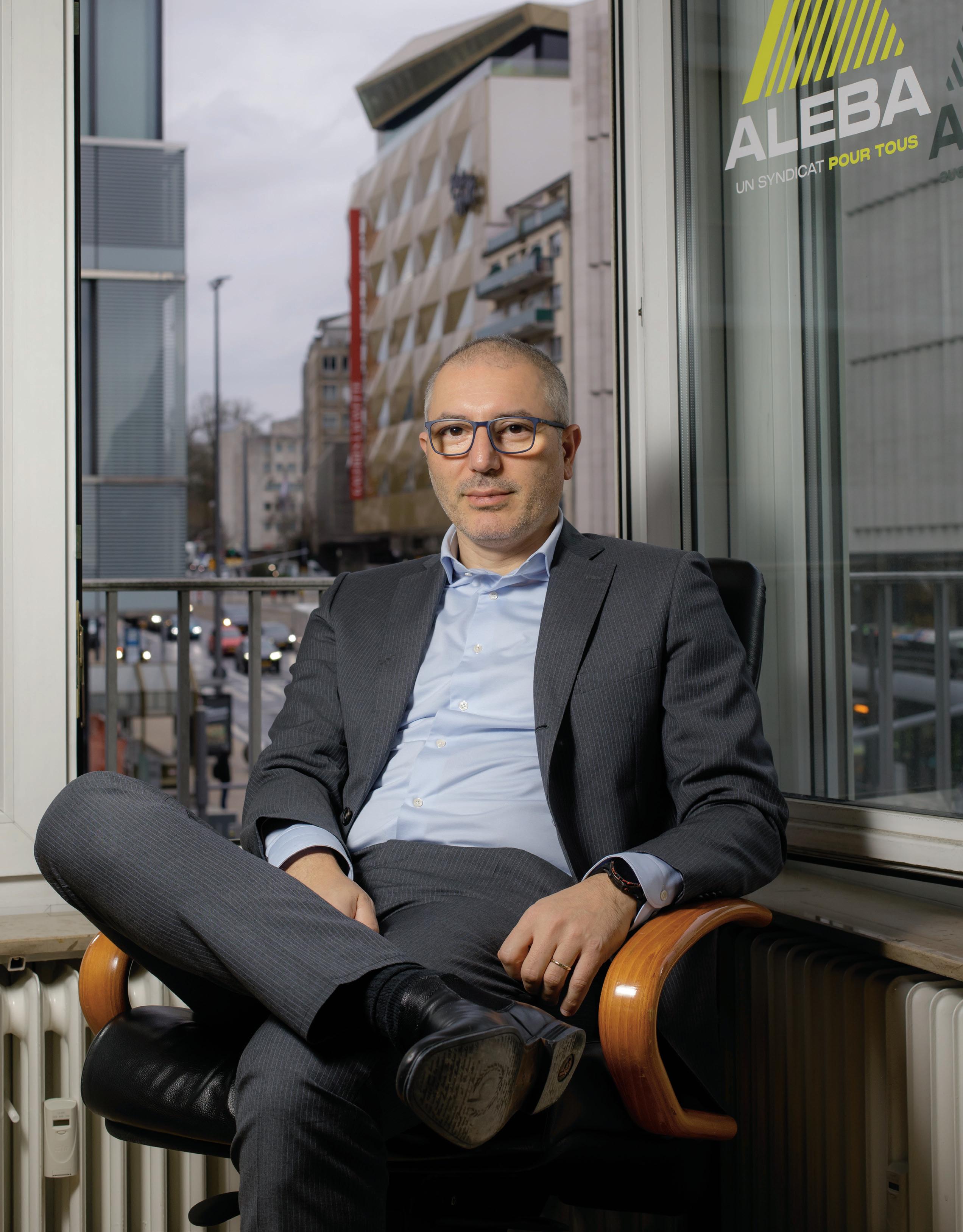 Roberto Mendolia has been president of the Aleba labour union since June 2019
Roberto Mendolia has been president of the Aleba labour union since June 2019
The Aleba trade union is expanding out of its historic base in the financial sector, with ambitious plans to grow its membership and be recognised as a national union, according to its president, Roberto Mendolia.
Mendolia explained that there are several factors that drove Aleba in this direction.
Firstly, Aleba’s integral structure can be replicated across different economic sectors, given that “the law is the same for everybody, and we are quite successful in the financial sector since more than 100 years.” In other words, Aleba realised that its existing structure equips them to effectively support significant labour disputes outside of the financial services industry. And Aleba concluded that limiting the union’s scope solely to the financial sector was unnecessary, especially considering the inquiries received from members transitioning out of financial roles asking Aleba, “‘why can’t I vote for you anymore? Why are you not [representing] other sectors?’ For example, somebody works in a bank, moves to a big 4, that’s two different sectors,” he said.
Mendolia noted that Aleba’s expansion plan was driven secondly by increased competition from national unions, resulting in “staff delegations from other unions [being elected] in our sector. Previously, it was exclusively Aleba” in the financial sector. But today there are “Aleba staff delegates elected, for example, in hospitals, shops, telecommunication and IT companies.”
“ We have to survive, to develop ourselves, otherwise, we won’t stay [around much] longer. We will slowly disappear like [what] we saw in the history of the unions.”
In the 2019 social elections, a significant portion of staff delegations, 58%, remained unaligned with either of the two major national unions, noted Mendolia. “And we call that a neutral staff delegation.” He opined that it’s a “weak” status for employers, “in the sense that” unaligned staff delegations “have themselves to pay lawyers if they have to start a conflict in which it’s necessary to use a lawyer. And this is the difference with the union, which can support, train, develop, explain and promote the social dialogue with the delegates, if the delegation is under the banner of a union.”
“Our main message: Dear neutral staff delegations, please align and create a delegation” linked with Aleba.
As for the team expansion, Mendolia said that “currently we are 11,000 members. We want to [reach] in the next mandate 15,000, because we have to be progressive.” Aleba has noticed a chain reaction, meaning that when the first member at a firm joins the trade union, others follow naturally. He hopes to reach 20,000 members, “which would be a reasonable target for 2029, because our target is to be a national union in 2029.”
The Aleba team will need to expand as well, he said. Currently “we have six board members,” who balance union activity with their full-time jobs in the private sector. “We are extending this to fifty board members for the next mandate.”
“ Our target is to be a national union in 2029”
“We have more or less ten lawyers working for us on a weekly basis, and we might arrive to fifteen lawyers,” since they need a ratio of roughly one lawyer per 1,000 members.
Despite the search for size, the union’s team still has its pulse on the workforce, he said. “Before being president for Aleba, I was first a staff delegate myself elected by co-workers [and] I’m still working for a company.”
“I had the chance to meet Mr. Georges Mischo, the new [CSV] labour minister [in February]. And we agreed to start a discussion about our topic, that could bring us to the European court, after the [social] elections.” The ministry “knows exactly what I’m” calling for, Mendolia stated. Meaning “the modification of the laws about representative status,” which Aleba lost in 2021.
Sector representative status is mostly “symbolic” but the way Mendolia remembered it, after the loss he “immediately” told colleagues: “‘letz’ be national, because if we’re national, then we can really represent our guys.”
ALEBA
IN FIGURES
11,000
Current members of Aleba
15,000
Membership target
6
Current Aleba board members
50
Number of board members planned for its expansion
10
Lawyers currently working with Aleba
15











28 RADAR Luxembourg fund ecosystem snapshot –
32 SERGE WEYLAND
Interview with new Alfi chief
40 GILLES ROTH Finance minister on competitiveness –
44 MICHÈLE EISENHUTH & OLIVIA MOESSNER Regulatory radar
52 SÉBASTIEN DANLOY Governance and reporting –
56 BARBARA SCHLYTER Tokenised asset potential
The Association of the Luxembourg Fund Industry’s Global Asset Management Conference takes place in Kirchberg, 19-20 March 2024.
The agenda is built around four themes: regulation, distribution, governance and innovation.
This special section features guest contributions on all four themes from 11 speakers at the conference, who outline what they will be talking about and what they hope the audience will get out of their panel or presentation.
But the section kicks off with an in-depth interview of Serge Weyland, Alfi’s recently appointed director general, who wants the grand duchy’s policymakers and its fund sector players to take “bold steps” in order to remain competitive.
Assets under management ticked up at the end of last year and beginning of this year. 2024 is expected to be a relatively good year for private equity and private credit funds.
Net
to the end of 2019. The long-term
towards fund consolidation continued last year, with the total number of funds down by 2%.
Net assets, €bn, as of 31 December 2022*
Promoters/initiators
JP Morgan Amundi
DWS Blackrock
Mancos/AIFM
JP Morgan Amundi
Administrators
DWS UBS State Street
JP Morgan
Total number of jurisdictions Luxembourg-domiciled funds distributed in, by group, as of June 2023**
Franklin Templeton Schroders
Blackrock
HSBC UBS
Fidelity International
JPMorgan Invesco
Amundi
Allianz
Aberdeen Standard
BNP Paribas
Credit Suisse
AllianceBernstein
Janus Henderson
T Rowe Price
Gam Investments
Pictet
Goldman Sachs
Custodians/depositaries
BNY Mellon Caceis State Street
JP Morgan
BNP Paribas Caceis
Transfer agents
ISDS/State Street
JP Morgan
RBC Investor Services
Auditors
Caceis PWC EY
KPMG
Deloitte
Legal advisers
Arendt & Medernach
Elvinger Hoss Prussen Linklaters
Allen & Overy
Wellington Management Co
Morgan Stanley
Capital Group
NN Group
Société Générale
M&G Investment
Jupiter
Deutsche Bank Orix
BPCE
Ninety One Axa
MFS Investment
Union Bancaire Privée
Prudential
Columbia Threadneedle Fundsmith
Bluebay Asset Management
Jones Lang Lasalle
Eurizon Capital
Multiconcept Fund Management
Oaktree Nordea
Mirae Asset
Capital Four Man
SEB
LGT
Investors continued to take cash out of retail-friendly Ucits funds the past couple of years, while net inflows into private market funds fared better*
€600bn €500bn
Article 8 funds experienced net outflows of €27bn in 2023, while article 9 funds recorded net inflows of €4.3bn and article 6 funds saw €93bn of net inflows***
Global survey of 500 fund selectors**
Private equity
Active funds
Index funds
Private credit
Separately managed account
Thematic strategies
Hedge funds
Annuities
Direct indexing
Funds of funds
Semi-transparent ETFs
As of December 2023***
In his first sit-down press interview since taking the reins of the Association of the Luxembourg Fund Industry, Serge Weyland says the grand duchy should learn to take a tougher line, talks about competition with France and Ireland, and calls for more teleworking.
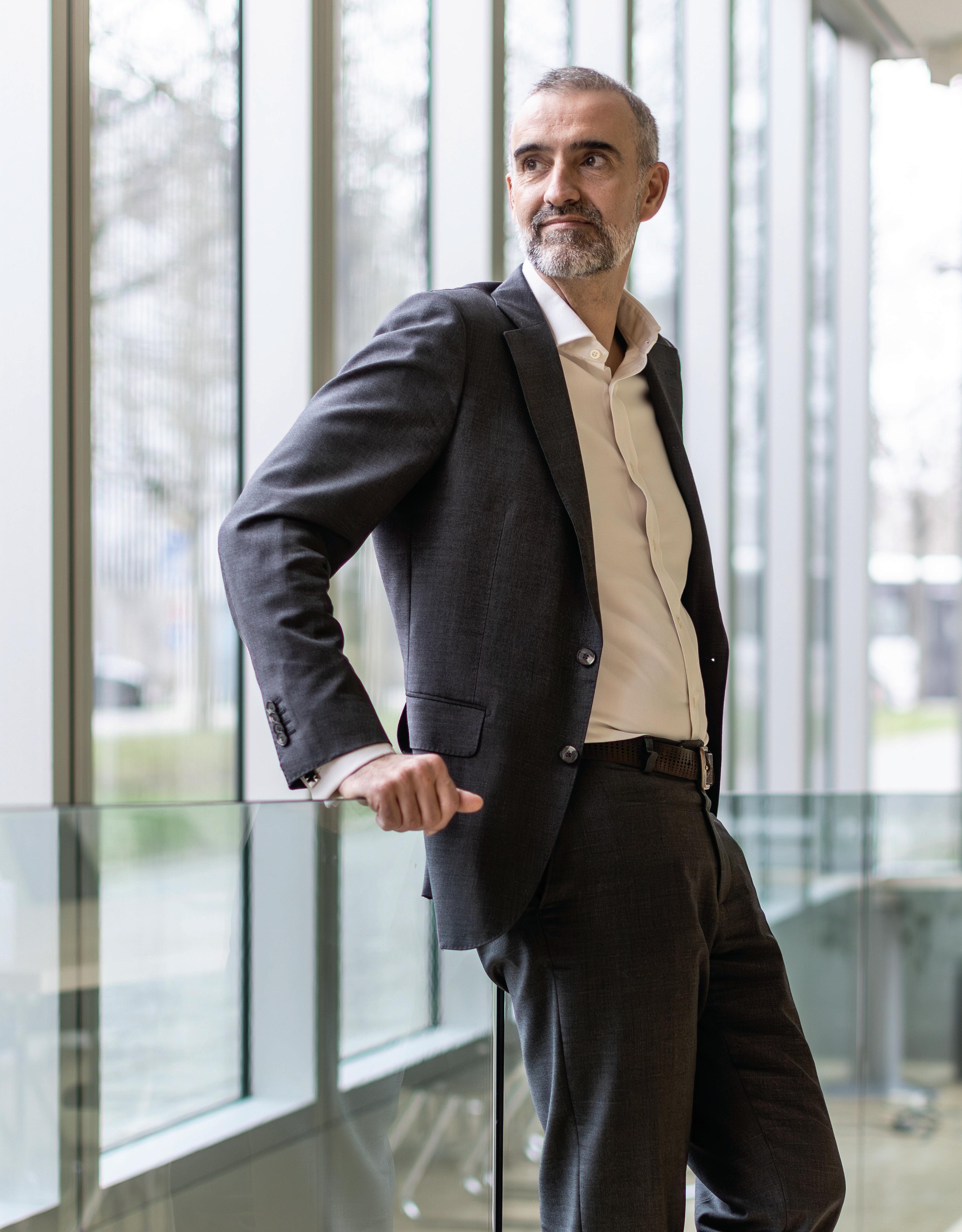 Serge Weyland wants Luxembourg’s funds sector to have a bigger voice in Europe
Serge Weyland wants Luxembourg’s funds sector to have a bigger voice in Europe
He is the newly appointed director general of the Association of the Luxembourg Fund Industry, a 35-year-old trade group that said it represents “more than 1,500 Luxembourg-domiciled investment funds” and more than 350 asset management companies and service providers. In recent years, Serge Weyland has been known for being softspokenly outspoken on tokenisation technologies and the democratisation of private asset funds. Now he’s got to speak for the entire investment fund ecosystem. He certainly wants to give it a voice and he certainly has something to say.
Europhile
First things first: why did he take up the Alfi post? When introducing himself to stakeholders, “usually I talk a little bit about my background,” Weyland said during an interview with Delano. “My father was a diplomat” in Luxembourg’s foreign service. He had postings in New York, London and was in Brussels for roughly 14 years, where he served as Luxembourg’s representative to the EU. This is the post that outgoing Luxembourg for Finance CEO Nicolas Mackel will take up in the autumn. Weyland said that “Nicolas and my father worked together when my father was ambassador in Washington. That’s where I first met Nick. I grew up in a very international, very Europhile environment. My father contributed a lot to the building of Europe, because when Luxembourg had the [EU] presidency before the signature of the Maastricht Treaty, he was in Brussels, so obviously was very involved in those discussions.”
After his studies, Weyland started as a management consultant, then worked in asset servicing and for an asset manager. But his father’s career clearly inspired him. “After almost 30 years in the industry, when you have an opportunity to really do something for your country... it was a fairly obvious choice to make.”
The funds industry represents a significant part of the grand duchy’s economy, and tax base, and Weyland wants to secure the sector’s future growth and in turn the country’s prosperity. That will require what he called “bold steps”.
“The current government is very, very aware of the importance of the financial services industry, I think. But probably now, more than in the past, it is important to take bold steps. Luxembourg doesn’t necessarily have a reputation for taking bold steps. But in these times of change, we’re in fierce competition. A lot of existing or emerging financial centres are willing to get a piece of the cake we have. So we have to continue innovating, we have to be able to sometimes take bold steps. It’s about competitiveness. It is important to start with a government that understands the financial services industry and understands the economic weight of that industry. And the importance for it to continue to develop and understand the risks of seeing other financial centres compete.”
Learning to say ‘no’
“It never happened, for whatever political reasons”
What are some of the bold steps he has in mind? Weyland alluded to the grand duchy’s approach in recent years of applying the maximum level of EU financial regulations, a stance adopted to shake off the country’s historic image as a tax haven. “We--and when I say we, it’s the industry, the regulator, the lawmakers in Luxembourg--we should be confident enough in our understanding of the financial ecosystem to have our voice heard at the European level and say to the European Commission and [European Securities and Markets Authority] ‘no, this is not the right way of doing things, you should do it differently.’” On other occasions, Luxembourg’s financial regulator, the CSSF, could “take a different stance from Esma recommendations... provided, of course, risks are managed and I can still justify why I’m doing things a little differently.”
For example, when EU authorities are late publishing technical standards, a somewhat regular occurrence, the CSSF should be given leeway to implement provisional guidelines, “to say, this is how we are going to manage this. Luxembourg has been able to show that we have been fairly consistent--we haven’t had any major scandals--from the investor pro-
Association of the Luxembourg Fund Industry
Serge Weyland started as director general on 1 December 2023. Up until then, he had been co-chair of Alfi’s digital/fintech forum.
Previous
CEO of Edmond de Rothschild Asset Management Luxembourg for 6 years. Prior to that, management roles at Banque Internationale à Luxembourg, Caceis, Sal Oppenheim Jr & Cie and Accenture.
Weyland earned a master’s degree in finance from the Solvay Brussels School of Economics and Management.
tection perspective. And the expertise is there.” While EU regulations often leave room for manoeuvre, the grand duchy typically toes the line. On the other hand, referring to socially responsible investing, “you have countries like France having taken bold steps with respect to impact regimes. Why not do the same? Or even better?”
Luxembourg’s best practices
Better still, national leaders should promote “the things Luxembourg has been doing well for a long time.” For instance, the CSSF’s “circular 02/77 on investment breaches and Nav errors,” referring to net asset valuations, which he called “basic investor protection, really basic.” But many other member states and the EU itself have never implemented comparable standards. “I don’t understand why Luxembourg has had this regime for over 20 years and some of the other very large domiciles across Europe have not had a similar regime, meaning that their regulators were completely blind on investment breaches or Nav errors in retail funds. That means that
a pan-European regulator does not do its job properly. I mean, they should have looked at that and said, ‘this is best practice. You other guys, you should do the same.’ That was my understanding of the [point of] peer reviews from Esma, but apparently it never happened, for whatever political reasons.”
Retail-friendly Ucits investment funds are “one of the big export products of Europe to the rest of the world.” If the pan-EU regulator were one day to tighten the rules too far, things could snap. “It would really be sad if Esma would kill the best export success. They have the power to do so if we’re not careful.”
Weyland is not entirely critical of policymakers and does not think the burden hangs entirely on them. “Sometimes I think the difficulty is that regulators need to be a little remote from the reality of the business. That’s where we need to work harder to make sure that we always convey the business context for them, [so they can] understand the impact of regulation and laws.” That is something he aims to achieve at Alfi,
Net assets by domicile, as of 30 September 2023, €m
to help officials and stakeholders across the financial sector “connect the dots”.
At the same time, sometimes regulators get blamed when the industry itself should be more accountable. “Time to market for this industry is absolutely crucial. So how do we make sure we have clear rules and we can launch funds very quickly? I’ll share this little story from one of my previous jobs, where we would have a time to market for a fund launch of typically six months plus.” At the firm and across the sector, “people tended to say, well, you know, it’s the CSSF” that has been slow in responding to authorisation applications. “Then we worked on the process internally, between product teams, between the internal legal advisors, the external legal advisors, in the file preparation, and we were able to reduce that by half. So we ended up, on average, with a three-month turnaround for a product launch. Very often it is not the regulator, it’s actually the way people are organised. We need to make sure that Luxembourg--that’s law firms, service providers, the CSSF--that we deliver,
Net assets by domicile, as of 30 September 2023, €m
and that we all take responsibility. It cannot be that when a specific person is on vacation, then nothing happens. We’ve all heard the stories.”
“The CSSF has grown a lot over the past few years. They are now, I think, stabilising their size. They’ve been able to organise themselves and have addressed to a large extent these smaller issues” around responsiveness, where the Luxembourg agency often gets unfavourably compared to Ireland’s regulator. “Probably where I can see” room for improvement “is indeed for them to speak up more at the European level and to make their voice heard. And their voice is, partially, also making sure that they understand the industry better across all asset classes, which is a challenge because Luxembourg has such a broad reach. In terms of asset class, you don’t have that in Ireland, [a market] very far from the diversity we have in Luxembourg--very, very far. If you look at the size of the [exchangetraded fund] business alone in Ireland, that’s a really big chunk of their assets. And, you know, it’s plain vanilla stuff. So the complexity we have to deal with here is much higher, which I think we’re lucky to have,” Weyland stated. “But it needs to be said, because you have to compare apples with apples. Very, very often people tend to compare apples with pears, because then they’ll say, ‘well, we got approval in Ireland for this, that and the other, and it was half the time than in Luxembourg. But if you look at it in detail, you notice that it’s very different products. Competition is important, but the devil is in the details.”
Conveying granularity
The challenge for Alfi “is being able to actually dig deep when needed, to go and get the information that our policymakers need to understand what hurts the industry or what needs to be done differently for us and better accommodate the needs of the industry. If I had to summarise one element” that will be key for Alfi moving forward, it would be “understanding the business and being able to convey the granularity in those details, which sometimes are a killer to the industry. And sometimes can drive away business if they’re not addressed properly.”
At the same time, mutual respect and putting yourself in others’ shoes are impor-
Conversation Serge WeylandThe number of people working in Luxembourg’s funds and fund services sector* rose by 13% over the past 5 years.
tant, in Weyland’s view. “I’m very keen on engaging with” regulatory staff. “I’ve known the CSSF for a number of years and I’m very conscious of their context. And I think that’s important when working hand in hand with regulators and policymakers: understanding each other’s context. Because we all make mistakes, we all only have a limited perspective on the industry and it’s by working together with them we can have a broader perspective.”
A few days after his interview with Delano, Weyland planned to meet with Esma representatives and he said: “I fully appreciate where they are coming from, but I think sometimes we need to be able to articulate things the way they are, because otherwise we don’t make any progress. I’m very new in the job, so maybe I will have to revise some of my statements in a few weeks’ time, but I like to be a little provocative.” While he is a strong believer in “respecting other people’s work... I have very little tolerance for when things are done for the wrong reasons. Because that is where we need to be very vocal about it.
“ We are fighting for talent ”Specialised PFS Investment firms
Something I think we try to do, and I always try to do, is [when] things are done for the wrong reasons then it should be said” out loud.
Earlier in the conversation, Weyland discussed competition with rival European financial centres. “First of all, I think competition is sound, it keeps us on our toes. If I look at Ireland, very often we’re in the same boat [and have a] common position vis-à-vis European regulations or protectionist measures, etc. We need allies in that discussion.”
Asked about particular protectionist measures, he replied: “Unfortunately, we see examples of this protectionism come through in the way regulatory frameworks are actually shaped in Europe. A recent example for me is Eltif.” The European Long-Term Investment Fund “regime is a fabulous vehicle to ensure that people other than only institutional investors have access to private markets. Of course, we need to be mindful that it comes with risks, liquidity constraints, etc. But I think there is great value in creating a pan-European regime that will hopefully be able to leverage off the good things that have been happening in the various countries. But it is not a reason to kill this regime because one thinks that there’s local products that should continue. Because the reality is that local products very often only invest in the local markets, they are very small, they are costly for the investor. I think a pan-European product can be much more efficient. That’s an example of where we have seen some protectionism going on.”
Does he mean protectionism from Paris? “Yeah. The French regulator has been very vocal about trying to constrain the Eltif a lot or impose liquidity requirements, which funnily enough, they don’t impose on the local product. Which is quite interesting.”
And what about bold steps closer to home? Weyland said recruitment and retention efforts need to be stepped up to keep Luxembourg’s funds sector an attractive place to work, and that tax and teleworking policies would be a good place to start. Spe-

cifically, “tax breaks” which “could be temporary tax breaks for a few years, or if you had an inpat regime, for all these young talents, why not? I wouldn’t be shocked [for the government] to say, ‘you only get taxed 50% for your first five years, so you can at least afford to live in a flat in Luxembourg.’ Why not? We are fighting for talent and talent is extremely important in this industry, as a service industry.”
In terms of attracting more experienced staff, “it’s a combination of ease of relocating, having decent schooling for kids. There, a lot of initiatives have been taken. The university also is an important topic to continue attracting research and knowhow to Luxembourg. And, as I said, the tax component is important to remain competitive. We should not be at a disadvantage vis-à-vis other countries. I think that would be a mistake. I think people that are
fairly compensated need to pay their taxes, that seems clear, but we should not be in a situation, or we should not end up in a situation, where we are less competitive than our neighbours. That would be fatal.”
Along with taxes, Weyland said that EU rules on working from home--which despite recent changes is capped for cross-border commuters at 34 working days annually--potentially put Luxembourg at a disadvantage in terms of talent retention and recruitment. “We know that teleworking has been a game-changer, has had the effect of, indeed, becoming more interesting for people commuting to work in their own country by saying, ‘maybe I can instead of working for a Luxembourg law firm, I work for a Paris-based law firm whilst, I don’t know, living in Nancy and I [only] have to be in Paris one or two days a week. I can do that.’ So, yes, continuing to work on the arrangements with neighbouring countries on the double tax treaty side” should be a priority for the government.
Does Weyland have a specific number in mind? “You should, ideally, have between 50 and 100 days of teleworking per year. In those agreements, I think 50 is probably on the lower end. But we’re making progress. And I think one of the best reasons to go down that route is the environment. I stood in traffic this morning, and I thought, ‘well, I definitely need more teleworking’.”
Agenda for Alfi
Alfi plans to publish an ambition paper “by mid-year” spelling out its updated objectives and providing “a detailed action plan with milestones,” Weyland said. “We have four big areas in mind.” The first is being “asset management centric, so to continue really listening to the voice of asset managers and identifying the need for product innovation” and making Luxembourg attractive for those asset classes.
The second is “digitalisation of both the value chain, the distribution, so becoming more efficient, but also reaching out to more investors going forward as an industry. The third quadrant is the sustainability side... making sure that the asset management industry contributes to building a more sustainable world. Of course, it’s a journey, it’s a lot about engagement, about
Percentage of total net assets, as of 31 January 2024
transition, rather than trying to be all green from day one. That doesn’t work. And that also includes, for me, the whole transition, the need for assets or money flowing into the real economy. And then, the fourth quadrant is the investor engagement side, where that’s a lot about explaining what we do, being easier to understand.”
Part of that includes a big push for improved financial education for both youngsters and adults. “If you look at the past 15 years, what we would have achieved with very good financial education and good policymaking for channelling savings into financial products, I mean, people would be much better off today, much better off. You would have much less social conflicts. We should learn from that mistake.”

For two decades, ATOZ has crafted a unique melody, blending the precision of tax advisory services with the ongoing commitment to environmental sustainability, social responsibility, and the governance of excellence. The lush surroundings mirror our dedication to the cultural richness that defines our journey. Our team, a diverse ensemble of talents, each playing a crucial role in creating a masterpiece of client success.
Join us in cherishing this milestone, looking at the past, the present and... beyond!
The fund industry has proven resilient faced with a challenging global environment over the past few years that was marked by geopolitical tensions, high inflation and steep interest rate rises, as well as slower economic growth. At the same time, the industry has had to adapt to increased digitalisation of its processes and distribution channels as well as to stricter disclosure requirements around sustainability risks.
These are certainly challenges, but also new opportunities for an industry that is central to supporting sustainable economic growth and helping us address the challenges of a rapidly aging population, especially in Europe.






GILLES ROTH Luxembourg minister of finance
“We want to be first movers and avoid any form of gold plating”
As set out in its coalition agreement, the new government has made the development of the Luxembourg financial centre a key priority. Our financial centre has developed rapidly over the past decades and has managed to position itself in new areas such as alternative investment funds, corporate banking, financial technologies or sustainable investments. However, this is no reason to rest on our laurels.
We need to ensure that Luxembourg remains an attractive and competitive jurisdiction and a leader in cross-border financial services. Importantly, our overarching objective must be to create a conducive environment that allows our financial centre, across its different industry segments, to climb further up the value chain.
In the short to mid-term, I have thus given myself several priorities. In the context of the new and evolving international tax environment, I want to bring corporate taxation in line with the OECD average. As of 2025, I intend to lower the corporate tax rate by 1%, thus creating additional predictability for companies in Luxembourg. I also intend to reduce the subscription tax for actively managed ETFs in view of the growing popularity of this emerging fund product. I will continue to modernise our financial sector legislation to allow our financial centre to seize new opportunities, including in emerging areas such as alternative asset classes and digital assets.
The growth of our financial centre also means that access to the right skills and talent has become more crucial than ever. As finance minister, I am committed to further improving both the regime of profit-sharing bonuses as well as the expat tax regime to
support companies in attracting and retaining the highly skilled talent they need.
When implementing EU legislation, we want to be first movers and avoid any form of gold plating to create the best possible environment for our financial sector to grow and innovate.
Luxembourg will continue to defend cross-border financial services within an EU single market that remains open to the rest of the world. Here, the Capital Markets Union (CMU) is a case in point. We all agree that Europe needs deeper and more liquid capital markets. The fund industry can and must play a central role in this context. A successful CMU can, however, not be decreed from the top down. A CMU that works for all citizens in the EU must be built from the bottom up.
Rather than wasting time and energy discussing centralised supervision, we need to focus on achieving full mutual recognition, develop local expertise and make sure that financial services are easily accessible wherever a client may be in the EU.
We also need to step up our collective eff orts to increase fi nancial literacy, as underlined in the government’s coalition agreement. Financial literacy can help turn savers into investors and channel private funding into our economies.
The dialogue with the financial sector is central to the government’s efforts to strengthen the Luxembourg financial centre and its flagship fund industry.

AS YOUR DEDICATED ASSET SERVICING PARTNER WE STRIVE
TO



PROVIDE THE BEST SERVICE EXPERIENCE FOR YOU.
Your goals become our goals. We demonstrate responsibility towards all stakeholders, from clients to partners.
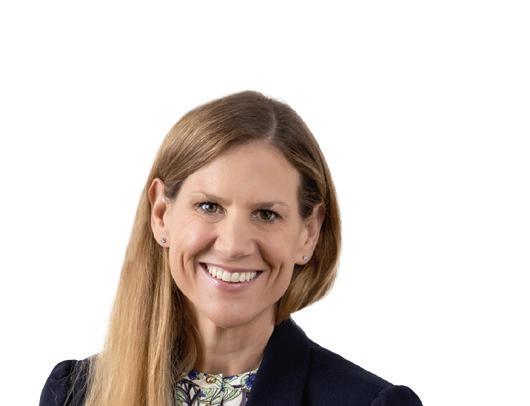

MAREN STADLER-TJAN Partner Cli ord Chance
“Regulators... play a significant role in the stimulation of private investment in the EU economy”
The regulators, both at the European and the national level, are crucial to the smooth functioning and ongoing development of the EU asset management industry. It is them that are in charge of the delivery, evolution, supervision and enforcement of investment fund regimes that are e cient, consistent and proportionate.
As such, the regulators of the European asset management industry play a signi cant role in the stimulation of private investment in the EU economy, particularly towards the green and digital transitions, which is currently a key priority in the European Union.
Next to stimulating economic growth via private investments, it is clearly of equal priority to protect the rights of investors, for example, in the form of increased transparency, granularity and standardisation of investor disclosures, as well as risk and liquidity management.
The EU has a broad range of regulatory regimes that seek to both support European economic development and the development of the European asset management industry, whilst building and maintaining robust investor protections (including the Eltif, Mifid, Priips Regulation, the Ucits Directive, AIFMD, Solvency II and SFDR). The regulatory environment which asset managers operate in is accordingly complex. Next to European-level regulation, member states have in place their own domestic investment fund regimes, which must be considered.
Di erent types of investors have di erent needs, vulnerabilities and expectations in their interactions with the asset management industry. Particularly when it comes to alternative investment funds, products range widely in both their asset strategy and fund terms and can be highly bespoke. As regulatory regimes strive to keep pace with the swift impact of technological developments, the evolving green transition and macro-economic factors, the expectation is that the regulatory environment is only going to become more complex over time. The regulators in the EU therefore have a central vantage point, overseeing the intersection of a host of intricate, multi-level rules and requirements and their implementation and enforcement in practice.
Against this multi-faceted background, I am looking forward to an interesting discussion with the CSSF and the opportunity to gain insight into the Luxembourg regulator's view of the direction of travel for the evolution of the regulatory landscape impacting European asset management. We will also discuss the challenges facing the asset management industry and the regulator’s perspective of fostering regimes that are both e cient and robust in an increasingly complex environment.
Maren Stadler-Tjan will interview Marco Zwick, a director at the Luxembourg Financial Sector Supervisory Commission (CSSF), during the “Let’s hear it from the regulator!” panel at the Alfi Global Assets Management Conference, Tuesday 19 March at 10:55am.
















Consultancy, tailored to you











































Parva is a Pan-European consulting firm specialised in financial services focusing on strategy, governance, business & operational change and transformation







www.parvaconsulting.com


Our approach is hands-on We work with clients to identify, design and implement customised solutions


Our people combine multi-year industry knowledge of the financial services sector with the experience of delivering real change




2024 continues to show see a flurry of regulatory activity in Europe.
Words MICHÈLE EISENHUTH AND OLIVIA MOESSNEREuropean institutions continue reshaping the digital landscape with the adoption of the Artificial Intelligence Act and the implementation of regulations such as Dora and Mica. The technological transition is on its way in Europe. Tokenisation of nancial instruments is emerging as a major trend in the asset management industry and is likely to reshape the products, their distribution, their operations and their managers.
On the sustainable finance side, the SFDR and Taxonomy Regulation remain at the forefront with ongoing clari cations and with the adoption of new delegated regulations relating to the criteria for meeting the environmental objectives under the Taxonomy Regulation, alongside the review of the SFDR regulatory technical standards and forthcoming Esma guidelines on funds’ names using ESG or sustainability-related terms. Those developments underscore Europe’s leadership in sustainable nance, where ESG considerations have become a fundamental element of the nancial sector to protect the environmental capital for the next generations and boost the green nance leading to creation of more and more article 9 funds.
Initiatives such as Eltifs and the RIS, coupled with rigorous reviews of costs and charges, liquidity rules and asset valuation rules signal a commitment that performance, transparency and fair prices are basic elements for a winning game.
Restoring that con dence also hinges on providing investors with access to
robust returns while managing risks e ectively. This would redirect funds currently remaining in savings accounts into the real economy.
On the costs and charges side, while fair pricing remains paramount for investor protection, regulatory interventions must strike a delicate balance to foster competition in the asset management industry and support nancial innovation, steering clear of indirect price regulation.
Ensuring liquidity for investment funds remains a cornerstone of nancial markets protection. Ucits VI and AIFMD II, which are being nalised, will amongst others bring more flexibilities for European funds in using liquidity management tools.
On the other side, efforts to revive investor interest should not be hindered by the review of Ucits eligible assets rules, another initiative led at EU level and closely monitored by the asset management industry. Restricting the scope of Ucits eligible assets risks undermining the competitiveness of Ucits products vis-àvis other nancial instruments, curtailing the exibility of active managers and limiting the nancial o er and return which retail investors can expect.

















Conversely, expanding the spectrum of permissible exposures for Ucits, while adequately mitigating risks, could invigorate the sector, enhancing its appeal and diversifying investment opportunities, in line with how Eltif 2.0 has allowed retail investors to gain access to alternative asset classes. We trust that European institutions will keep supporting the Ucits brand that has been alive and safe for the past 35 years in Europe and beyond!
Meanwhile, in Luxembourg, the available “funds toolbox” has been modernised by introducing improvements and adjustments such as new structuring options and exibilities for Part II funds as well as a wider access to Raifs by well-informed investors other than professional investors.


 Michèle Eisenhuth and Olivia Moessner speak on the “2024 regulatory update” panel at the Alfi Global Asset Management Conference, Tuesday 19 March at 11:30am.
Photos Elvinger Hoss Prussen, Matic Zorman/Maison Moderne
MICHÈLE EISENHUTH OLIVIA MOESSNER
Michèle Eisenhuth and Olivia Moessner speak on the “2024 regulatory update” panel at the Alfi Global Asset Management Conference, Tuesday 19 March at 11:30am.
Photos Elvinger Hoss Prussen, Matic Zorman/Maison Moderne
MICHÈLE EISENHUTH OLIVIA MOESSNER

The newly revised AIFM Directive tightens debt fund oversight, mandates liquidity tools, and eases cross-border depositary appointments.
 Amélie Frontain, Authorised Director, VPsf (Value Partners)
Amélie Frontain, Authorised Director, VPsf (Value Partners)
The European Parliament’s adoption of the revised AIFM Directive on 7 February 2024 marks a pivotal moment for the European investment funds industry, building on the Directive’s foundation laid in 2011 and its Luxembourg law transposition in 2013.
This amendment, spurred by the European Commission’s 2021 proposal, aims to enhance the European capital market, strengthen investor protection, and align requirements with the UCITS Directive.
Key reforms include more stringent regulations for loan-originating AIFs to mitigate financial and systemic risks; and tighten the delegation model, ensuring better supervision, conflict of interest management, and accurate notifications to authorities.
The Directive allows appointing depositaries from another Member State under specific conditions, recognising the lack of presence of depositaries in certain Member States. It also mandates AIFMs to implement at least two liquidity management tools and dedicated procedures. Reporting obligations for AIFMs shall be expanded, covering the entire range of managed markets and instruments.

Expected to take effect in Luxembourg by 2026, these changes shall foster a more resilient and transparent European financial ecosystem.
As AIFMs and UCITS management companies are gearing up to align with these regulatory changes, Value Partners remains ready to guide clients through this transition and reconfigure operations to comply with new regulatory demands, facilitating a seamless shift to the evolving regulatory framework.
The industry-wide adoption of the Ume due diligence platform marks a groundbreaking paradigm shift within the nancial industry, strategically responding to the intensifying landscape of regulatory scrutiny and an increased emphasis on investor protection, sanctions enforcement and financial crime compliance. The Ume platform not only streamlines the due diligence process but fundamen-
tally reshapes industry dynamics by fostering collaboration among investment managers and distributors through a shared online platform.
This transformative approach extends beyond mere operational efficiency, as Ume sets an elevated standard for the entire industry. It cultivates a culture of continuous education and encourages strict adherence to regulatory standards, creating a framework that extends seamlessly from investment fund managers to distributors. The platform’s active engagement with major fund management groups, including 14 of the top 20 global investment managers, and a rapidly growing number of distributors underscores its pivotal role as a driving force for positive change in the nancial ecosystem.








 LAURENT DENAYER CEO Ume
LAURENT DENAYER CEO Ume
“A single venue for exchanging due diligence information”
The widespread adoption of Ume is evident in the daily responses from hundreds of distributors to due diligence questionnaires. This swift and extensive uptake underscores the industry’s recognition of the platform’s innovative approach and its potential to revolutionise traditional due diligence practices, making them more e cient and comprehensive.
A pivotal practical outcome of leveraging Ume is the substantial reduction in time and e ort required for due diligence processes. The platform not only streamlines the collection of necessary documentation but also expedites the subsequent analysis and reporting of the amassed data. This newfound e ciency empowers investment managers to expedite the introduction of their products to market, substantially reducing the upfront
due diligence e ort traditionally associated with fund distribution.
Highlighting its distinct competitive edge, Ume boasts the largest fund distributor database and the most comprehensive collection of completed due diligence questionnaires. The continuous, and rapid, growth of the Ume ecosystem, with an increasing number of fund managers and distributors joining daily, further forti es Ume’s appeal to all participants as a single venue for exchanging due diligence information.
In conclusion, Ume has not only e ectively addressed the formidable challenges faced by investment managers in conducting due diligence on fund distributors but has also reshaped industry practices. By providing an innovative and e cient platform, Ume not only simpli es processes and saves valuable time and e ort but also empowers managers with unparalleled insights. With its distinctive o ering and evident market leadership, Ume is poised to continue steering the evolution of fund distributor due diligence, solidifying its position as an industry pioneer driving positive and transformative change.




luxembourg

book now on luxair.lu
Manchester up to 3 flights per week
starting from march 29th 2024


Despite its name, the retail investment strategy (RIS) is an omnibus directive amending several pieces of existing legislations with the ambition to improve the conditions for greater participation of retail investors in capital markets. The final requirements are expected to become applicable by the beginning of 2026 at the earliest.
Price regulation: threat or opportunity?
As part of their pricing process, product manufacturers and distributors will be












NORMAN FINSTER Wealth & asset management partner EY
“We could see a significant reshuffle in the offering of services and the distribution landscape”
required to identify and quantify all costs and charges and assess whether such costs and charges could undermine the value which is expected to be brought by the product. Pricing of Priips, Ucits or AIFs would need to consider cost benchmarks, which are relevant for the type of fund and investment strategy. These benchmarks will be developed by the European Securities and Markets Authority and European Insurance and Occupational Pensions Authority. In case of deviation from the benchmarks, manufacturers should be able to establish that costs and charges are justi ed and proportionate in order to obtain authorisation.
Such benchmarks and increased transparency on costs are likely to lead to a rationalisation of fund ranges at the manufacturer level in order to remain competitive versus direct lines. This price regulation could reinforce the trend to passive investment strategies while adding pressure on actively managed investments. It could also become a threat to the democratisation of private markets: when asset managers are prescribed to charge assumingly lower fees this could impact their interest in sourcing retail investor money.
In its current form, the directive foresees that in case of non-independent advice, investment firms, insurance undertakings and intermediaries will have to perform a client’s best interest test , replacing the Mifid “quality enhancement” and the IDD “consumer detriment” tests.
This new test will require intermediaries to perform more quantitative assessments of the eligibility of inducements and be attentive to the relevance and the added value of services provided to end clients. This di culty could lead to a switch to more value-added services to higher customer segments, on which it will be easier to deploy fee-based models.
Impact on distributor service models
The share of execution-only services remains high in the banking sector. However, more recently private banks have had to face erce price competition from electronic trading platforms in the execution-only arena, and now they see a growing demand for advisory services from investors who are seeking expertise but in a collaborative and interactive way. In this context, the future rules on inducements should be integrated by the distributors when they review their strategies, design their investment plans and adjust their service models.
As a consequence we could see a signi cant reshu e in the o ering of services and the distribution landscape which would impact product ranges too. The pressure on cost will also exacerbate the need to rethink service models, considering the expected increased share of digital distribution versus physical channels, leading to a form of hybrid models.
Turbulent market conditions are causing investment returns in the private equity industry to decline. Fund managers developed solutions to counter the exit and fundraising shortfalls, adapted their fund terms and used emerging trends as new opportunities to attract capital.

The private equity landscape is witnessing a surge in secondary transactions. These transactions, led either by fund sponsors ("GP-led") or investors directly ("LP-led"), offer liquidity solutions amid a challenging exit environment. GP-led transactions involve transferring assets to continuation funds to extend holding periods until market conditions for exit transactions improve. LP-led transactions enable investors to rebalance portfolios and maintain diversification. Additionally, NAV facilities emerge as a strategic liquidity management tool for late-stage funds. The additional capital provided by borrowers and secured against the fund portfolio is typically used to fund follow-on transactions or distributions.
Market dynamics influence fund terms negotiation, giving LPs more leverage, especially in the small to mid-market segment. Fund terms, such as fundraising and invest -
ment periods, have become longer and more easily extendable. GP clawback terms are scrutinised, with interim clawback calculations gaining traction to address market fluctuations. Side letters negotiations focus on management fees discount and co-investment opportunities. Smaller GPs use co-investments on a “no fee/no carry” as a sweetener to lure investors away from the largest fund managers where only the largest LPs have access to co-investments.
Consolidation trends are evident, with capital favoring established GPs and making it a challenging fundraising for emerging and mid-market players who (for some) are embarking on joint ventures or GP stakes transactions to attract more capital and tap into new markets in an effort to future proof their business. Private credit remains a prominent trend, thriving in a high interest rate environment despite some concern that borrowers’ default is likely to pick up.
The industry witnesses a shift in 2023, likely to accelerate in 2024, towards high-net-worth individuals and semiretail investors, prompting the development of access/ feeder funds and dedicated platforms to accommodate regulatory and operational complexities. Part II UCIs are in great demand while the industry awaits the final shape of the ELTIF 2.0 regulatory technical standards (RTS). Permanent capital solutions like evergreen funds gain momentum alongside closed-ended private equity funds.

SCAN TO READ THE EXTENDED ARTICLE
Loyens & Loeff Luxembourg
jerome.mullmaier@loyensloeff.com
mathilde.scheirlinck@loyensloeff.com
Mathilde Scheirlinck and Jérôme Mullmaïer, Investment Management experts







GUILLAUME SCAFFE
Partner Deloitte
“We identified jurisdictions offering promising cross-border opportunities”
Luxembourg, Europe’s largest fund domicile and second worldwide, ranks rst in cross-border distribution of investment funds, marketing over 50% of assets under management (AUM) around the world. An innovative cross-border distribution strategy is crucial for asset managers to boost their sales and attract new investors worldwide.
With more than 45,000 cross-border noti cation packages released in 2023, Deloitte Luxembourg leads in this industry. Based on this large experience, we identi ed jurisdictions o ering promising cross-border opportunities.
The APAC region ranks second in crossborder AUM (after Europe). In Singapore and Hong Kong, foreign products (especially Ucits) are very popular. Foreign funds marketed to retail investors outnumber domestic vehicles (ratios of 1:4 in Singapore and 1:3 in Hong Kong). Around 70% of these funds are Luxembourg-domiciled.
International asset managers also market their European flagships in South Korea, Taiwan, Macao and Japan. We see a growing appetite from retail investors in Brunei Darussalam.
Additionally, some local fund structures in Thailand and Indonesia are set up to invest in Luxembourg funds.
Private pension funds, especially in Chile, Peru, Colombia and Mexico, dominate the Latam segment. In Chile, 72% of foreign funds authorised for marketing to pension funds are Luxembourg-domiciled mutual funds. Public marketing, subject
to local regulator registration, is only possible in a few jurisdictions and sales are limited.
Passive ETFs listed on local stock markets in Mexico and Colombia are good alternatives for local retail investors. The region’s most important nancial market, Brazil, can be accessed via local feeder funds/fund of funds. High net worth clients in the region are often served via hubs in Uruguay, Panama and Miami.
The United Arab Emirates has become the frontrunner for foreign funds, offering attractive market entry options. However, this huge success has instigated a recent policy shift to the reinstate barriers to foreign funds with the objective of promoting local funds. Nevertheless, the UAE’s appeal persists; we see a rising interest in setting up local funds.
In Bahrain, foreign fund distribution massively surpasses local funds with a ratio of about 15:1. Based on our experience, Oman is also a promising market.
With over 150 foreign fund registrations, South Africa leads Africa in cross-border distribution. The Canadian market, though of high interest, is limited to institutional investors under exemption regimes, as retail distribution is complex given the province-speci c approach.
Guillaume Sca e moderates the “Latest distribution trends and opportunities in emerging markets” panel at the Alfi Global Asset Management conference, Tuesday 19 March at 5:20pm.„In and around the Philharmonie“
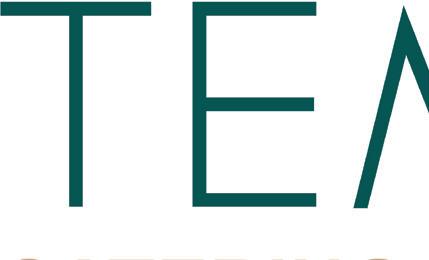




In today’s complex regulatory landscape, firms across the investment ecosystem are evolving to ensure that funds are well governed and offering value to investors.Words SÉBASTIEN DANLOY
In recent years, every industry conference seems to be dominated by the theme of regulation. Across our industry we are always adapting to new or revised regulations that influence how investment funds should be governed, and form part of a robust and resilient investment ecosystem.
In an increasingly complex environment, industry associations provide an essential connecting thread between investment managers, the firms that support them, and the regulator. Alfi’s working groups have provided feedback on key regulatory developments which will affect how funds operate, such as T+1 and AIFMD, as well as sustainability developments such as the EU sustainable finance package and Esma’s guidelines on fund labelling, to name but a few. These working groups--which BNP Paribas’ securities services business is a part of--provide an essential forum for dialogue and to align stakeholders’ interests, fundamentally helping to develop regulations that are fair, enforceable and protect investors.
Fund boards provide a driving force
Throughout my time in Luxembourg in the 2010s, another key change I witnessed was the growing responsibilities placed on fund boards. Under both the revised Ucits directive and the AIFMD directive, funds are now strongly advised to appoint at least one non-executive or independent director to the board of the relevant Ucits fund or AIF when distributed to retail investors. Following new substance and reporting requirements set forth in these directives, boards are also expected to ensure sufficient resources--technical and human--are dedicated to the oversight of delegated portfolio and risk management functions including delegated portfolio and risk management, and administration when applicable.
Liquidity and valuation have also come into the fund board’s purview. The CSSF’s recommendations on Esma’s supervisory action include recommendations for the validation and monitoring of valuation policies and the design of valuation policies in
“Reports are not just a tick-box, but an enabler of efficiency and decision-making”
SÉBASTIEN DANLOY
Global head of sales & relationship management for institutional investors, securities servicesBNP Paribas
stressed market conditions. Liquidity management tools have been examined by the FSB and Iosco, who provide standards on oversight requirements to ensure that these tools are used effectively. These developments will be vital in enabling the greater democratisation of private assets, as well as other less liquid asset classes. Boards will have a critical role in ensuring that their funds implement these requirements, and are equipped to take advantage of the new opportunities that arise
As risk frameworks become more stringent, funds and their service providers must follow complex anti-money laundering (AML) and know-your-client (KYC) processes to onboard clients. At the same time, in today’s digital world, clients expect more streamlined experiences Firms can turn these challenges into opportunities by exploring how to offer more automated processes that still maintain a robust compliance framework. For example, BNP Paribas’ securities services business is investing in digitalised reporting and workflow tools that offer clients investment and operational data across a wider set of channels. Our focus is on developing reporting that is as customisable and user-friendly as possible, so that reports are not just a tick-box, but an enabler of efficiency and decision-making. After all, that is what good governance is all about.
Sébastien Danloy chairs the day 2 morning session on governance at the Alfi Global Asset Management Conference, Wednesday 20 March.










Bingo.lu
The new real estate platform that puts your desires first.

The UK and EU investment fund sectors face similar challenges in supporting sustainable finance, addressing savings challenges and leveraging technology.Words JONATHAN LIPKIN
With almost half of the world’s population heading to the polls, including the UK, EU and US, this could be a pivotal year of change across the globe. Political, economic and security uncertainty continues, with businesses and households across Europe facing significant headwinds. In this tougher environment, the UK investment management industry, which looks after €7.9trn for citizens in the UK and Europe, is likely to play an ever more important role in helping to deliver better












JONATHAN LIPKIN Director, policy, strategy and innovation
The Investment Association
“We expect politicians and policymakers to turn towards investors to help fund growth”
financial outcomes and supporting the development of a modern, resilient and sustainable Europe.
Despite Brexit, the UK and the EU are inextricably linked and face similar challenges and opportunities. With economic performance sluggish, we expect politicians and policymakers to turn towards investors to help fund growth. Across Europe, we’ve seen a range of proposals, including a European Savings Fund, as well as national-level initiatives such as Germany exploring directing pension funds into local infrastructure.
There are also widespread concerns that households are not saving enough, particularly as governments increasingly expect citizens to make greater individual provision for retirement. Getting the EU retail investment strategy right could significantly boost participation through increased consumer confidence and access to investment products. But there is much more to do, and wider use of tools, such as pensions dashboards and auto-enrolment programmes, could play an important role in improving income in retirement.
The race to net zero is another topic which will feature in the upcoming elections, as politicians and policymakers grapple with how to meet the 2050 deadline. Sustainable finance is a key area for growth and investors will have an important role in supporting and financing the green transition. While the EU and UK have both established regulatory frameworks to promote sustainable investment, these are
complex, partly reflecting the scale of the net zero challenge, partly reflecting often diverse investment and wider public policy preferences.
Underpinning all of this is a technological revolution, which is gathering pace and will have some dramatic impacts on fi nancial services, as well as the wider economy and society. By developing innovative solutions, such as digital payment platforms, robo-advisors and blockchain applications, we can off er more tailored and cost-eff ective services. Technology can also help signifi cantly improve risk management and fraud prevention. Innovation, however, requires a supportive policy and regulatory environment, and this is an area where business, government and regulators can work together.
Regardless of the outcome of the elections, the UK industry is ready to play its part, and retains a resolutely open-border mindset from both an investment and operational perspective. The relationship between Luxembourg and the United Kingdom is an excellent example of how the investment management industry can operate successfully at regional and global level to meet the needs of customers and deploy capital at scale.
We look forward to continuing the discussion with politicians, policymakers and regulators with the aim of making investing better for all.
Europe is faced with unprecedented challenges and needs to mobilise hundreds of billions of euros each year to finance the green and digital transitions, to cope with an ageing population and bridge the pension funding gap, as well as strengthen its strategic autonomy in areas such as defence, technologies and supply of critical materials.
Given the current levels of indebtedness of most member states, the bulk of these investments will necessarily have to come from the private sector. Hence why more and more voices in political and business circles are calling--and rightly so--for urgent and bold actions to develop deeper, more integrated and liquid capital markets in Europe. Despite a decade of intense EU legislative work and two successive Capital Markets Union action plans, European capital markets currently remain too fragmented and clearly undersized when compared to the US.
The objective is laudable, but how do we get there? First, we absolutely need to find ways to turn more EU citizens into firsttime investors. Increased retail participation in capital markets is a necessary condition for deeper and more liquid capital markets. European households enjoy one of the highest savings rate in the world (approximately €14trn were held in cash and bank deposits at the end of 2022) whereas investment levels remain too low in most countries.
Shifting just a fraction of these savings from bank deposits to investments would already make a considerable difference not only for governments, European firms or infrastructure projects in need of cost-effective financing but also for investors
themselves by helping them to secure their financial future, particularly in retirement. Finally cracking that nut will require a combination of ambitious policy measures both at EU and national level to promote an investment culture that empowers citizens to confidently take ownership of their financial wellbeing. Sound financial advice, regular financial health-checks, improved financial literacy, reform of occupational pension systems (through the implementation of auto-enrolment mechanisms) and tax incentives (for instance, by establishing tax-exempt investment plans for individual retail investors) are, in our view, key levers of success.
To unlock the full potential of sustainable finance and achieve the objectives of the Paris Agreement, another priority for the next EU legislative cycle should be to streamline existing regulations to improve their overall consistency, close the ESG data gap and develop more investor-friendly disclosures.
Lastly, if we want vibrant capital markets in Europe, it is essential to ensure the EU remains an attractive place for investing and doing business. EU financial market players, and asset managers in particular, need an enabling regulatory framework allowing them to compete on an equal footing with their international peers. For this to happen, new EU regulations should be subject to a competitiveness check, remaining barriers to cross-border investment should be tackled and reporting requirements reduced.
Asset managers serve millions of clients in Europe and all over the world and pro-
vide a critical source of stable, long-term funding to the European economy. As such, we are deeply committed and stand ready to help build stronger capital markets in Europe. The clock is ticking. So let’s roll up our sleeves and make it happen.












VINCENT INGHAM Director, regulatory policy European Fund and Asset Management Association
“We absolutely need to find ways to turn more EU citizens into firsttime investors”
The launch of the first blockchain application bitcoin in 2009 invoked much hype but also scepticism. However, increasing market adoption and institutionalisation of the underlying blockchain technology warrant a closer look.
Blockchains are distributed databases managed by a network of multiple participants. Through their innovative technical setup, blockchains ensure both consistent and immutable data across
multiple stakeholders. Blockchains can be either private or public. While private blockchain participation is restricted, public blockchains are open to everyone. Private blockchains consist of a network of participants that know each other and can build trust among themselves, while public blockchains mostly operate on a pseudonymous basis. Even in a trustless environment, the public blockchain technology ensures data consistency among the network participants.
Blockchain technology has large potential for financial markets. Assets can be ‘tokenised’--that is digitally represented on a blockchain as a token. While the scope of tokenisation is unlimited, we at DWS generally distinguish two categories:








 BARBARA SCHLYTER Head of Xtrackers digital products and partnerships DWS Investment
BARBARA SCHLYTER Head of Xtrackers digital products and partnerships DWS Investment
“By using tokenised assets... market participants directly communicate via the blockchain”
First, tokenised assets including all traditional and alternative asset classes, such as tokenised equities, bonds and real estate, and also tokenised funds. Second, tokenised money describes tokenised traditional fiat money and can either be issued by central banks (e.g., central bank digital currencies or CBDCs) or by private institutions (e.g., ‘stablecoins’).
Broad tokenisation adoption is expected to lead to considerable efficiency gains. Today, the asset management and broader financial markets value chain is fragmented across many centralised parties. They must constantly reconcile transaction and other data, leading to considerable friction loss. By using tokenised assets and tokenised money, the different market participants directly communicate via the blockchain. This would therefore increase market transparency, as well as enable faster settlement and heightened automation. Smart contracts, that is automatically executable code on a blockchain, could automate
many processes such as corporate actions. Tokenisation could thus lead to cost efficiencies and may even shift market infrastructures with new players emerging and others losing power.
Use cases
Blockchain technology has been successfully tested for the last 15 years. Today, the largest tokenisation use case is stablecoins, which are blockchain-based tokens that are 1:1 pegged to an underlying currency, most often the USD. Stablecoins have a current market capitalisation of ~$140bn (as of 26 February 2024, according to coinmarketcap.com).
Other tokenised assets are still in their beginnings, but there are landmark proofs of concept from large institutional players. Examples include the European Investment Bank, which in 2021 tokenised a bond on the public ethereum blockchain, and Siemens, which in 2023 tokenised a bond on the public polygon blockchain. Even if there are multiple hurdles to overcome for scaled adoption and new risks that need to be understood and managed, the large potential of blockchain technology warrants further work on this topic. Other past disruptive innovations such as the computer, the internet, but also passive investing have taken many years if not even decades for scaled adoption.
Pour rester une place financière internationale, Luxembourg applique un processus de transformation continue. À l’horizon 2035, le paysage financier luxembourgeois aura fortement évolué, sous l’effet de l’ innovation technologique, de l’évolution des attentes des clients et influencé par les nouvelles tendances mondiales. À quoi ressemblera notre place financière dans une dizaine d’années ? Dix experts exprimeront un avis sur l’avenir des métiers de la finance au Luxembourg.
Luxembourg is undergoing a process of continuous transformation as an international financial centre. By 2035, Luxembourg’s economic landscape will have evolved considerably, driven by technological innovation, evolving customer expectations and shifting global trends. What will our financial marketplace look like in a decade’s time? Ten experts offer their views on the future of finance in Luxembourg.

Digital innovation has been the boardroom buzzword for a few years now, and I believe we will soon see this idea come to fruition thanks to tokenisation. This technology has steamrolled its way into some nancial circles, but it now appears to be breaking into the mainstream. Blockchain has the chance to foster greater e ciency, inclusivity and innovation in nancial markets for the future.
The potential of tokenised assets
So what makes tokenisation so attractive? Its potential. Digital assets and blockchain
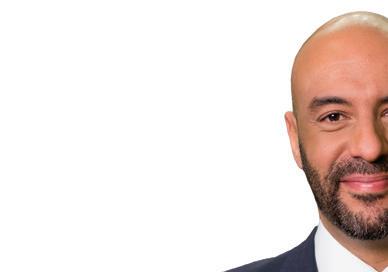
 SAID FIHRI Partner KPMG
SAID FIHRI Partner KPMG

“At the core of tokenisation lies the promise of disintermediation”
will dismantle barriers within the investment ecosystem, especially here in Luxembourg. Tokenisation facilitates seamless asset ownership transfer, making traditional intermediaries obsolete.
This shift not only promises heightened e ciency but will open up greater transparency and accessibility within markets. Tokenisation has the chance to disrupt investment dynamics and catalyse transformative changes within the fund industry. We must all be prepared and, most of all, excited for the addition into the industry.
Unlocking e iciency through disintermediation
At the core of tokenisation lies the promise of disintermediation, a process that can revolutionise operational dynamics within the fund industry.
Historically, financial transactions have been trapped within a complex web of intermediaries, each imposing its own toll on the investment process. Tokenisation breaks down this traditional model by streamlining operations and eliminating the need for intermediaries, thus fostering unprecedented levels of e ciency and cost-e ectiveness.
Central to this operational transformation is blockchain’s capacity to automate key facets of asset management. Through the utilisation of smart contracts and decentralised ledgers, tokenisation ensures frictionless asset transfers, removing the need for labour-intensive reconciliation processes. By circumventing traditional intermediaries, tokenisation facilitates faster transaction speeds and enhances security measures, thereby mitigating risks and bolstering investor con dence.
Investment democratisation
Aside from operational efficiencies, I envision tokenisation heralding a new era of democratisation within the investment landscape. Investment opportunities have been predominantly monopolised by institutional players, leaving retail investors on the side of nancial markets. What we will see tokenisation do is democratise access, resulting in a more level playing field and more empowered investors across diverse demographics
By fractionalising assets and reducing entry barriers, tokenisation expands the investor base, unlocking previously untapped pools of capital and promoting greater market inclusivity. Retail investors now nd themselves at the forefront of investment opportunities.
So what’s my outlook? Tokenisation is here to stay. Of course, major transformation takes time and investment, but we have the chance to create a more seamless and more transparent nancial industry with tokenisation and digital asset management. The future is tokenised!








The 18th edition of the European Funds Trophy was held in Paris on 7 March 2024. François Chauvet, CEO of Fundclass, an independent fund rating company that determines the winners, sat down with Delano to talk about the firm’s methodology, the winners in Luxembourg and to take a look back at the previous year.
Words LYDIA LINNAHow can the best-performing funds and fund managers be rated and compared in a fair, neutral and transparent way?
For Fundclass CEO François Chauvet, the company’s audited methodology allows the comparison of apples to apples and oranges to oranges, so to speak. Fundclass defines and computes the risk profile of European funds, then creates “peer groups” of funds that have a similar risk profile. The “clustering process” ensures that funds in a certain category really are comparable.
Once funds are classifi ed, Fundclass identifies the best risk/return ratio within the same peer group, then identifies the best performers over multiple periods of time. In the end, each fund gets a quantitative rating. With rankings computed every quarter, the system is like the Tour de France, he explained. The best rider needs to be able to compete well in time trials and mountain stages, while a good fund should be able to perform consistently well throughout the investment cycle, no matter the market conditions.
The Fundclass trophy is awarded to the best European asset management companies in the long-term (over a period of



FRANÇOIS CHAUVET CEO Fundclass
“ From a performance point of view, it was a rather robust year “
seven years). Asset managers from Sweden, Ireland, France, the UK and Spain were the winners.
Winners in Luxembourg Fundclass also ranks asset managers by country. The seven best asset managers, by category, in Luxembourg were: Eleva Capital, Swan Am, Baloise, Bluebay Funds, T Rowe Price, Candriam and J.P. Morgan Asset Management.
According to the Fundclass methodology, funds that they rank as “five-star” funds perform better than four-star funds, which perform better than three-star funds and so on. The number of five-star funds indicates the difficulty, or complexity, of the market.
Chauvet noted that in 2023, 3.9% were fi ve-star funds, making it a moderately difficult year. Using a skiing metaphor, it would be a “rather red” piste. 8.9% were four-star funds and 16.5% were three-star funds, making up 29.3% of the total. These three categories together normally sum up to around 30%, he added. About one-fifth (21.3%) were two-star funds and another fifth (20.8%) were one-star funds.
Poorly-performing funds are instead assigned negative ratings: 15.2% of funds received a minus, while 13.4% received a double minus. These two categories almost always come out to around 30% as well, said Chauvet.
A “paradoxical year”
2022 was very turbulent, said Chauvet, thanks to the rise in interest rates and the beginning of Russia’s full-scale invasion of Ukraine. “But last year--2023--there were few bumps. On equity funds, we have astronomical performances--almost in all categories--even though it wasn’t really predictable. And since it wasn’t really predictable, fund managers were faced with a situation that was not, let’s say, academic.”
“On an economic level--when we look at the economic data--we had a very different year from previous years. It was the year in which we had the impact of the increase in interest rates. And it wasn’t a small increase: we started from zero and reached levels of 4%, 5%.”
“Strictly speaking economically, the fact that we find ourselves in a period where we’re experiencing a strong rise in rates should have resulted in bonds going down, which is what happened--bonds
had negative returns. But there are some who came out better than others.”
“From an academic point of view, we should have suffered a bit on stocks.” But “stocks did not, in fact, suff er from the rate increases. The market actually continued to rise. So it’s a year that was, one could say, a bit paradoxical.”
“Finally, from a performance point of view, it was a rather robust year. There were even some quite extraordinary performances in certain categories, despite the context.”
Rates won’t immediately go down Central banks have gone “all the way” in raising rates to curb inflation, said Chauvet, and “people think that interest rates will go down tomorrow. No. It’s not going to happen tomorrow. And why? Because the Americans [the Federal Reserve] are careful. So they’ll wait to make sure that the effects [on the economy] are real, and once they’re certain that the effects are real, they’ll cut rates.”
“One day, rates will eventually go down,” he said. But “it’s something that has been so anticipated that once it actually does happen, it will have already been taken into account in certain calculations.”
Funds
Five-star funds










 LIZE-MARI BARNES
LIZE-MARI BARNES
General manager Luxembourg, global CFO P&C reinsurance (managing director)
Swiss Re
The regulatory environment has visibly intensi ed across the world and at the EU level in recent years impacting the (re)insurance sector. Recent examples are the EU Taxonomy, the Corporate Sustainability Reporting Directive (CSRD), the Digital Operational Resilience Act (Dora), Solvency II or the Insurance Recovery & Resolution Directive (IRRD). As these important initiatives are being rolled out, it is essential to ensure a level playing eld within the EU and to make sure that the voice of Luxembourg is heard at European institutions and by decision-makers. We look forward to engaging with authorities on the various initiatives to enhance the market’s attractiveness and resilience through business-focused supervisory interactions or talent initiatives, which are crucial to a thriving business environment.
SARA BERUJON
Executive director, Luxembourg payments country head, regional product manager
J.P. Morgan
Regulatory compliance isn’t just a requirement, it’s the right thing to do for end users. Over the next 18 months regulation will establish protections for payments users across Europe. Take the instant payments mandate, which requires payment service providers to complete transfers in 10 seconds, allowing faster access to funds. Or consider PSD3, which creates a foundation for future regulation in the EU, strengthens consumer protection, improves transparency, and increases competition--all of which bene t consumers.
From a data sharing perspective, the proposed Fida framework will let consumers grant and revoke third party access to data held by nancial institutions. While some of these regulations have quick implementation timelines, compliance will lead to smoother experiences, increasing satisfaction and bene ting your business.





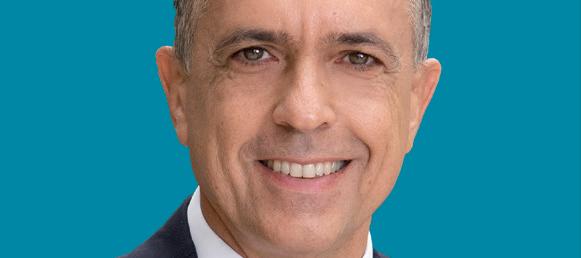

Head of regulatory and public a airs Société Générale Securities Services Luxembourg
Regulatory compliance is a growing and key strategic priority for legal departments.
One important regulatory topic continues to be ESG and achieving green transparency. The CSRD replaced NFRD in January 2024 with two novelties: the principle of double materiality and carbon assessment. CSRD extends the reporting obligations of companies to asset managers.
AIFMD II are the new requirements for AIFMs. It includes two LMTs plus strong governance/substance.
Certainly, Dora (application by 2025) is another key regulatory step to strengthen the resilience of the EU nancial sector. In January 2024, the CSSF published circular 24/847 regarding ICT-related incident reporting framework (application 1 April-1 June 2024).
Finally--although this is not a regulatory topic--the US move to T+1 settlement cycle, e ective 28 May 2024.
We spoke with nine financial professionals about the regulatory issues that are at the top of their list of priorities for the next 18 months. Here’s what they had to say.Words LYDIA LINNA


 JILL GRIFFIN Head of Luxembourg Columbia Threadneedle
JILL GRIFFIN Head of Luxembourg Columbia Threadneedle
Whilst Dora is due to go live in January 2025, the CSSF’s publication of circular 24/847 has fast tracked some of its requirements to June 2024. We are concentrating on how change impacts globally as well as locally.
The ESAs have published draft amendments to the SFDR RTS and proposed new guidelines for funds with a sustainability related term in its name. With the European Commission’s consultation on the Level 1 of SFDR in the background, it seems that we will constantly be updating the disclosures and investment process that we have put in place. We will broaden our tools and frameworks for evaluating sustainability impacts beyond our investment process as a result of CSRD. This directive requires us to better understand how sustainability issues nancially impact our management company, and the impact that the company’s activities have on people and the planet.
CLAUDE HIRTZIGFor us, the main topic is the accumulation of di erent regulatory topics.
We are still working on Mi d II. Although it entered into force in 2018, there is still work to be done as the regulators are working on best-in-class examples and how to improve implementation.
The second topic is ESG. Although we think that we have been following a green, socially responsible approach as a bank, now we have to translate the di erent ESG regulations into something that is accessible, understandable and e cient for customers, but also for advisors.
The third point is loan pricing. We need a more scienti c approach to the pricing of the loans we give, showing to the regulator that we take into account the risk budgets and speci c situations of customers. In terms of IT systems, training, processes--it has strong impacts on our daily work.







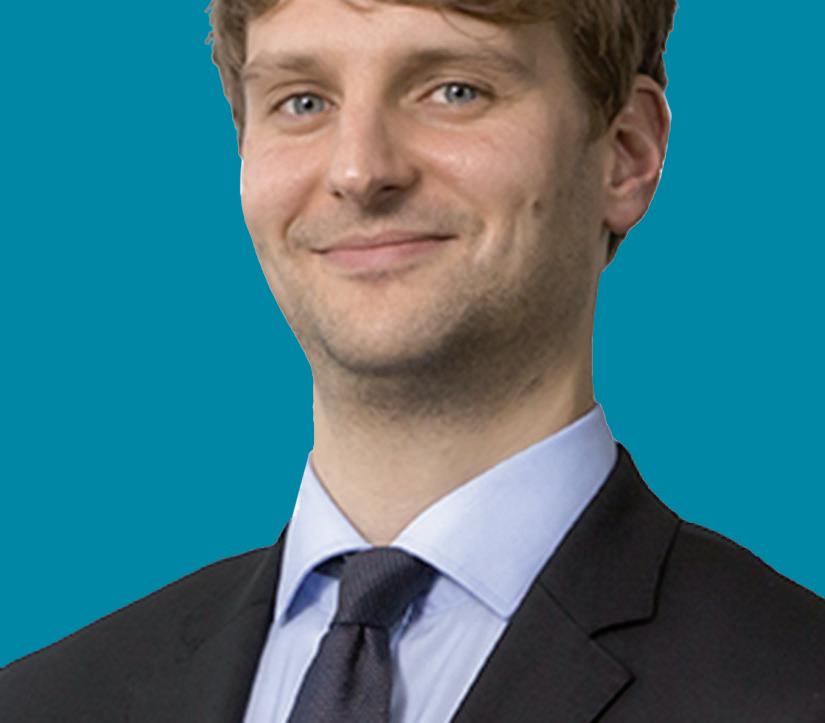 ANDREAS MEDLER Partner, international & corporate tax Atoz Tax Advisers
ANDREAS MEDLER Partner, international & corporate tax Atoz Tax Advisers
The local and international tax environment changes at an incredible pace. In 2024, Luxembourg companies should carefully monitor potential developments on Atad 3 and transfer pricing draft directives which may impose additional substance and documentation requirements.
The entry into e ect of the global minimum tax (Pillar 2) has added an entirely new set of tax rules to be considered. Speci cally fund managers should not jump to conclusions when assessing the Pillar 2 impact as the interpretation of many key concepts still requires clari cation. In addition, the increasing exibility for teleworking requires companies to be mindful of unexpected collateral damages, such as the creation of permanent establishments and impacts on transfer pricing policies which need to be aligned to such new fact patterns.
Photos Columbia Threadneedle, Spuerkeess, Atoz Tax Advisers
























Chief investment o icer/deputy CEO, AM Investments Partner, Antwort Capital
ESG considerations have become increasingly important. The SFDR framework classi es fund managers’ products and in uences their marketing strategies and operational approaches. Ambiguity is no longer acceptable and transparency is now necessary.



 RAOUL MULHEIMS Co-founder and CEO Finologee
RAOUL MULHEIMS Co-founder and CEO Finologee
Dora is the most challenging regulation faced by the nancial industry. Players have already been subject to outsourcing regulation. Now, pretty much every entity in the nancial industry is also in the scope of Dora. Several elements in the regulation are a very good thing. But on the other side, it will be a burden for many players--especially smaller ones.
PSD3 is more of an evolution, not a revolution. Still a draft, it will provide updates regarding the mandatory access to accounts that banks have to provide to third-party providers. Fida will have quite an important impact. Insurance companies, investment rms and other players will have to open their “vaults,” with regards to data. It will have an impact on the very core of their operations. They will have to question the way that they use--or don’t use--software and how they design the systems for tomorrow.
AIFM: alternative investment fund managers
AIFMD: Alternative Investment Fund Managers Directive
AML: anti-money laundering
Atad: Anti-Tax Avoidance Directive
CSRD: Corporate Sustainability Reporting Directive
CSSF: Financial Sector Supervisory Commission
Dora, which focuses on tech-oriented business continuity requirements, emphasises risk management, incident reporting, resilience testing and third-party contracting. It is expected to be in e ect by 2025.
Another legislation under review is the AIFMD II, which also addresses inconsistencies in the existing rules and introduces additional reporting requirements. Its expected e ectiveness is around 2025. The fund management industry is also expanding to include a new category of retail investors. This requires signi cant operational adjustments for fund managers from a regulatory standpoint.


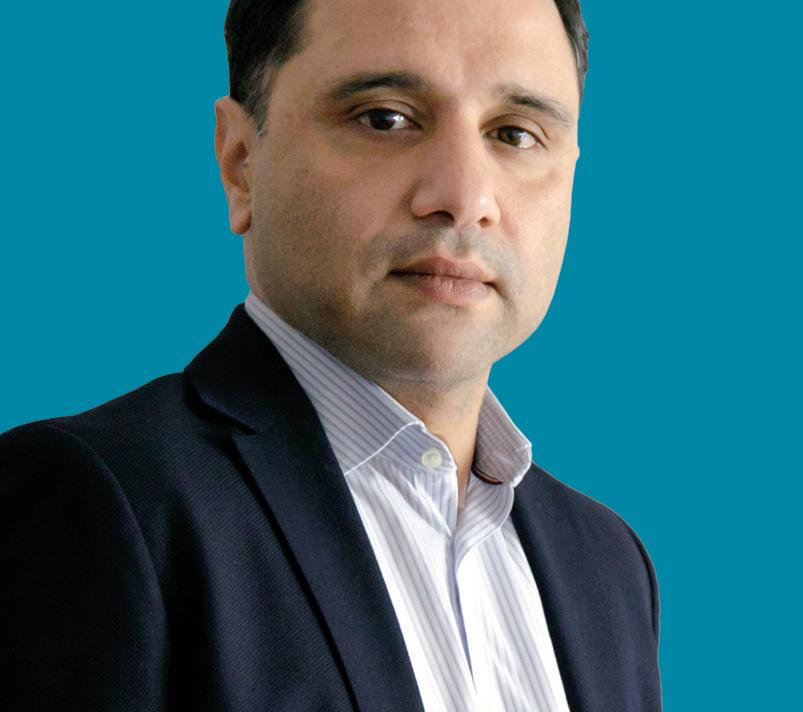
Our main concerns are based on regulations relating to cybersecurity, data privacy, sustainability and governance. The introduction of Dora has further complicated this scenario due to its extensive requirements with a focus on digital operational resilience. Sustainability and governance are at the forefront of our regulatory challenges, by reinforcing our commitment to o ering our clients and partners the right advice and products with complete transparency.
Practices such as “pro t testing” and “value for money” are essential steps in this direction to make a significant impact on the European nancial ecosystem in general. Besides, as we operate under Freedom of Services, European and local regulations speci c to each jurisdiction are a challenge as it requires a deep understanding of their complexities.
Dora: Digital Operational Resilience Act
ESA: European Supervisory Authorities
ESG: Environmental, Social, Governance
Fida: Financial Industry Data Access framework
ICT: information and communications technology
IRRD: Insurance Recovery & Resolution Directive
KYC: know-your-client
Mifid: Markets in Financial Instruments Directive
NFRD: Non-Financial Reporting Directive
PE: private equity
PFS: professional of the financial sector
PSD: Payment Services Directive
RTS: Regulatory Technical Standards
SFDR: Sustainable Finance Disclosure Regulation
The most influential economic decision-makers in Luxembourg.
Every two years, Maison Moderne produces the «Paperjam Top 100 - the ranking of the most influential economic decision-makers in Luxembourg». This ranking is the result of the work of a diverse and independent jury, and it is exclusively revealed during a gala evening where the jury presents the top ten ranked individuals on stage. This 10th edition of the Paperjam Top 100 ceremony is organized as a seated dinner.
Tuesday, December 10th
17:00-23:00
General Partners

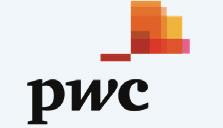
Financial firms need to comply with the EU’s Markets in Crypto-Assets
Regulation provisions in June 2024 and December 2024. Delano spoke with five industry experts to discuss the state of preparations and challenges ahead in Luxembourg.
Words KANGKAN HALDER73%
Nearly three-fourths of asset and wealth managers surveyed in Luxembourg were concerned that cryptoasset market infrastructure lacks maturity, according to the 2023 Cryptoasset Management Survey, issued by the Luxembourg House of Financial Technology and PWC.
In an era where cryptocurrencies and blockchain technology are rapidly reshaping the financial landscape, governments and regulators worldwide find themselves at a crossroads. At the heart of this transformation is the EU’s groundbreaking Markets in Crypto-Assets Regulation (Mica), a regulatory framework poised to standardise the chaotic and burgeoning crypto market. Aimed at protecting consumers, ensuring market integrity and upholding financial stability, Mica represents the EU’s ambitious attempt to navigate the complexities of digital finance.
By encompassing issuers of crypto-assets, cryptocurrency exchanges and digital wallet services, the regulation addresses a broad spectrum of the digital asset ecosystem. Its overarching goal is to catalyse innovation within this rapidly evolving industry while curtailing the myriad risks associated with digital assets. However, the impact of Mica is far from monolithic, varying significantly across different financial sectors. Through a detailed exploration, enriched by the perspectives of industry leaders from diverse backgrounds, let’s delve into the multifaceted implications, including challenges
and opportunities, ushered in by Mica’s implementation.
In the fast-paced realm of crypto exchanges, Jean-Baptiste Graftieaux, CEO of Bitstamp--a payment institution and virtual asset service provider licensed by the Luxembourg Financial Sector Supervisory Commission (CSSF)-details the steps his company is taking to align with the regulation. Graftieaux says, “Bitstamp is diligently conducting a gap analysis of the Mica requirements and keeps a close watch on the evolving framework.” Graftieaux adds, “Bitstamp is primed to incorporate and enforce Mica-specific policies and procedures as soon as the delegated regulations become explicit.”
On reflecting about Mica’s wider implications, Graftieaux acknowledges the critical balance between innovation and market stability. He affirms, “the framework recognises the revolutionary ability of blockchain technology,” underscoring the regulation’s appreciation for blockchain’s potential to transform. “Crosspollination of ideas will continue to foster
technological innovation--just under a more robust set of regulations.”
From the legal sector, Nadia Manzari of Bock Manzari Legal, echoes Graftieaux’s sentiments, lauding Mica for providing “clear regulatory guidelines” that enhance the security and confidence of service providers. Manzari anticipates that these guidelines will provide crypto service providers with the confidence needed to innovate and introduce new products and services. She believes that the certainty and stability brought by Mica will attract new issuers and providers in the crypto space.
Reflecting on the broader impact of Mica, Manzari shares an optimistic view, expecting it to lead to a “diversification of offerings in the crypto market, encouraging competition not only in terms of price but also in terms of the uniqueness and quality of services.” Manzari also highlights a key element of Mica, emphasising the importance of firms involved with crypto-assets obtaining the appropriate authorisation from competent authorities, such as the CSSF. She points out that this process “involves preparing and submitting comprehensive documentation that demonstrates the firm’s compliance with Mica’s operational and organisational standards.” Addressing the potential impact of the Mica on the funds industry, Henning Schwabe, a partner at Arendt & Medernach, draws on recent clarifications issued by the Luxembourg financial regulator, the CSSF, regarding the definition of ‘virtual assets.’ Schwabe provides a measured perspective, stating, “Mica will not be a revolution as such for investment funds based in Luxembourg and investing in such assets or for their managers.”
Fintech
In the fintech domain, Luc Falempin, CEO of Tokeny--an end-to-end platform dedicated to the issuance, management and transfer of tokenised securities or digital assets utilising blockchain technology--highlights a specific exclusion within Mica’s scope. “Mica does not apply to crypto-assets that qualify as financial instruments,” citing the definition found in article 4(1), point (15), of Directive












2014/65/EU. This definition encompasses a range of financial instruments including transferable securities, money market instruments, units in collective investment undertakings, derivative contracts, emission allowances and, as of 2023, also extends to financial instruments based on distributed ledger technology.
Emilie Allaert, head of Luxembourg Blockchain Lab--a joint initiative to boost blockchain technology’s development and adoption in Luxembourg, uniting academia, the private sector and government to work on innovative blockchain projects-says that the process of transposing Mica into national law and providing clarity for the fintech sector involves a meticulous procedure. Allaert recognises the demand for innovative investment instruments is growing among investors, yet observes that “the presence of cryptocurrencies often instills uncertainty and apprehension due to concerns about potential scams.” Mica is poised to address these anxieties by establishing clear boundaries and fostering trust, “thereby attracting new investors to the market.”

















Falempin underscores a critical distinction within Mica’s regulatory framework, indicating that certain crypto-assets, particularly those classified as financial instruments under existing EU directives, remain outside its purview. This delineation serves to reassure stakeholders within the fund industry, particularly those dealing with financial instruments, that the new regulatory landscape introduced by Mica may not directly impact their operations or investment strategies.
Falempin’s firm, Tokeny, specialising in providing tokenisation technologies for DLT-based financial instruments, colloquially known as ‘security tokens’, finds itself outside the scope of Mica. Falempin clarifies, “Tokeny is a pure technology provider,” emphasising that the company does not engage in operating clients’ platforms or managing the private keys of their wallets. This distinction is crucial in understanding Tokeny’s role within the digital asset ecosystem and its interaction with regulatory frameworks like Mica, argues Falempin.
24 September 2020: Introduction of Mica
The European Commission unveiled the Mica proposal as a component of its broader digital finance package.
30 June 2022: Preliminary agreement
Dialogue among the co-legislators, which began in April 2022, culminated in a provisional agreement on 30 June 2022.
5 October 2022: Member state approval
The provisional agreement on Mica received endorsement from the Committee of Permanent Representatives (Coreper), leading to its recommendation for the EU parliament’s consideration.
20 April 2023: EU parliament ratification
The European Parliament’s plenary session voted in support of the Mica regulation on 20 April 2023.
16 May 2023: European Council endorsement
The council of the EU ratified the parliament’s decision on 16 May 2023, marking the finalisation of the legislative process.
9 June 2023: Publication in the official journal
The Mica regulation’s final version was published in the Official Journal of the European Union, set to be officially enacted 20 days post-publication.
30 June 2024: Drafting of delegated acts
The European Securities and Markets Authority (Esma), in collaboration with the European Banking Authority (EBA), is expected to have prepared draft delegated acts.
30 June 2024: Initial tranche, implementation for stablecoins
The enforcement of titles III and IV, which address asset-referenced tokens (ARTs) and e-money tokens (EMTs), will commence.
30 December 2024: Final tranche, full implementation
The full spectrum of regulations will become applicable.
Falempin also shares his insights on the future of the tokenisation sector in light of the full application of Mica. He anticipates that the process of issuing security tokens might become more straightforward than issuing utility tokens for startups and small to medium-sized enterprises. This expectation stems from the stringent requirements Mica introduces, which could streamline the process for issuing security tokens by clarifying regulatory expectations and compliance standards.
Falempin suggests that Mica, by setting clear regulatory guidelines, could inadvertently favour the growth and adoption of security tokens over utility tokens, especially among entities that might benefit from a more defined regulatory pathway. This development could potentially reshape the landscape of token issuance, making security tokens a more attractive and viable option for emerging companies and SMEs looking to leverage blockchain technology for fundraising and asset tokenisation.
Manzari, reflecting on the implications of Mica for traditional financial institutions such as banks and investment firms, is optimistic about the potential expansion of their services into the crypto space. Manzari believes that the establishment of a clear legal framework by Mica will likely reduce the hesitancy of these institutions to embrace blockchain technologies and crypto-assets in their service offerings. She points out, “Encouraged by a clear legal framework these institutions may be less reluctant to integrate blockchain technologies and crypto-assets into their offerings.”
Manzari anticipates that this newfound clarity could foster collaborations between traditional financial institutions and fintech firms, thereby driving further innovation in the sector. This, in turn, is expected to stimulate growth in the fintech sector, potentially leading to job creation and innovation.
Allaert supports the idea, saying while discussions about DLT in finance have been ongoing, the absence of a regulatory framework has been a limiting factor. “With Mica now in place, companies stand to benefit significantly and should
capitalise on this regulatory clarity to drive innovation and growth,” asserts Allaert.
Addressing the matter of compliance under Mica, Manzari notes that for institutions already holding licences, Mica does not mandate specific new authorisation or licencing requirements. Instead, it introduces notification and exemption regimes specifically tailored for credit institutions, investment firms and electronic money institutions wishing to provide crypto-asset services. Despite these regimes offering a streamlined path for these institutions to enter the crypto market, Manzari warns, “these exemptions or notification regimes do come with several regulatory requirements which financial firms have to abide by if they intend to provide crypto-asset services.”
Schwabe presents a notable and positive impact of Mica on the investment fund industry, particularly focusing on the benefits of enhanced transparency requirements for crypto-asset issuers. Schwabe highlights that the detailed disclosure obligations, including the necessity for a crypto-asset white paper, will significantly benefit investment managers by providing them with a deeper and clearer understanding of the assets they aim to include in their portfolios. Such transparency is poised to furnish fund managers with a more comprehensive grasp of the risks associated with specific crypto-assets, thereby enabling them to devise more effective strategies for investor protection and contribute to the overall financial stability of the market.
Schwabe argues that the rigorous requirements imposed on issuers will not only facilitate better-informed decision-making among investment fund managers but will also serve to safeguard the funds themselves. The implication here is that these measures, by ensuring a high level of transparency and accountability from the issuers of crypto-assets, will inherently improve the risk assessment capabilities of fund managers. This, in turn, should lead to more prudent investment choices, enhanced protection for investors and a bolstering of financial stability within the broader ecosystem.
Graftieaux, echoing the sentiments surrounding Mica, emphasises the significance of consumer protection within the framework. He acknowledges the establishment of clear rules and obligations for crypto-assets service providers (Casps), highlighting the provision of protection speci cally designed for scenarios involving the insolvency or bankruptcy of a Casp. This focus on consumer protection is further bolstered by Mica’s requirement for stablecoin issuers to be regulated as EMIs, a move Graftieaux notes as benecial for enhancing customer safety.
Stablecoins, distinct from cryptocurrencies like bitcoin and ethereum due to their aim to maintain a stable value over time, often pegged to at currencies or physical commodities, are under particular scrutiny under Mica.
Falempin points out the implications of Mica for stablecoins, noting that its regulations make it more challenging for entities in Europe to issue payment tokens, unlike security tokens. Falempin suggests that this could inadvertently push the stablecoin business outside of the EU, highlighting a potential side e ect of the regulatory measures.
Manzari o ers a broader perspective on Mica’s objectives, stating that the regulation is designed to enhance market stability by imposing stringent rules on asset-backed stablecoins and other digital assets that might present systemic risks. Manzari highlights the regulation’s approach to preventing market manipulation and maintaining financial stability, including requirements for issuers to maintain adequate reserves and adhere to strict governance standards. This approach underscores Mica’s commitment to safeguarding the nancial ecosystem by ensuring that the operations of digital assets, especially stablecoins, are conducted in a manner that prioritises consumer protection and market integrity.
Manzari highlights the comprehensive nature of Mica, underscoring its inclusion of rigorous standards that encompass capital requirements, governance protocols and consumer protection measures for












NADIA MANZARI Partner
Bock Manzari Legal
“It is urgent for firms to initiate their compliance efforts forthwith”
issuers of crypto-assets and Casps, such as crypto exchanges and crypto-wallet providers. These requirements mandate that such actors align their operational, organisational and governance practices with those observed by traditional nancial institutions, thereby elevating the standards within the crypto sector to ensure enhanced consumer protection and market stability.
Schwabe, addressing the phased application of Mica, advises clients to meticulously analyse the regulation and prepare for its full implementation through detailed gap analysis. Schwabe points out the importance of understanding that the requirements and timelines may differ based on whether an entity is an issuer or a Casp, indicating the tailored approach of Mica towards di erent market participants. He highlights the critical milestones, with certain provisions of the regulation becoming e ective as of 29 June 2023, and additional requirements set to be progressively enforced on 30 June 2024, and nally on 30 December 2024.
Manzari stresses the urgency for rms to begin their compliance e orts without delay. She advocates for a proactive stance towards understanding regulatory expectations and engaging in sector-speci c discussions regarding the practical implementation of Mica. “It is urgent for rms to initiate their compliance e orts forthwith. This entails proactively seeking insights into regulatory mandates and actively engaging in sector-speci c dialogues concerning Mica’s practical application,” Manzari emphasises.
Schwabe expresses specific concerns regarding the development and implementation of the Regulatory Technical Standards under Mica, noting that they are still in a developmental phase. He references the initiative by the European Securities and Markets Authority, which launched two consultations on 29 January 2024--one focused on reverse solicitation and the other on the classification of crypto-assets as financial instruments under Mica.
Allaert points out that the Luxembourg Blockchain Lab is actively engaged in the discussions regarding the RTS and the
requests for comments in the various working groups.
Although the final form of the RTS remains uncertain, Schwabe suggests that the current drafts could serve as a preliminary guide. He believes that an EU certification under the proposed standards would offer reassurance to investors, underscoring the importance of regulatory clarity and investor confidence in the evolving landscape of crypto-assets.
Schwabe also flagged the specific requirements for issuers of asset-referenced tokens (ARTs), advising clients to establish a clear organisational structure with well-defined, transparent and consistent lines of responsibility. He emphasises the necessity of effective processes to identify, manage, monitor and report risks, including those related to money laundering and terrorism financing, to which they may be exposed. Schwabe reminds clients of the importance of periodically reviewing the effectiveness of their measures and procedures in fulfilling their regulatory obligations.
Graftieaux points out a potential downside of Mica, noting that while it might increase compliance costs and present barriers to market entry for new participants, the establishment of regulatory standards is expected to bolster investor confidence in the long term, thereby benefiting the industry as a whole. Manzari concurs that while Mica will elevate market integrity, it may also result in higher compliance costs, which could be particularly burdensome for SMEs in the fintech sector.
Graftieaux envisions Mica as a potential standard-bearer for a consistent global regulatory framework, emphasising the importance of uniform rules for all market participants. This vision aligns with a broader aspiration for regulatory coherence in the global crypto market.
In terms of education and information, Manzari believes that Mica’s comprehensive approach, which encompasses technology, finance and law, will foster interdisciplinary educational initiatives. She anticipates the development of programmes that integrate fintech, legal studies and regulatory compliance, catering to
Nadia Manzari, an attorney at Bock Manzari Legal, stressed the critical aspect of compliance with antimoney laundering and counter-terrorism financing standards as mandated by the EU’s Markets in Crypto Assets Regulation (Mica). She points out that the regulation requires cryptoasset service providers to adopt stringent measures to detect and prevent financial crimes. Manzari highlights the operational implications of these requirements, including conducting due diligence on customers, monitoring transactions and reporting suspicious activities. This dual focus on both structural organisation and vigilant operational practices underlines the comprehensive approach taken by Mica to ensure the integrity of the cryptomarket and protect it against financial crimes, thereby fostering a safer and more transparent environment for both providers and investors.
the evolving needs of the sector. Schwabe points to the active role of the Association of the Luxembourg Fund Industry in providing educational support on Mica to market participants through conferences and other formats, highlighting the industry’s commitment to ensuring a well-informed and compliant market ecosystem.
Allaert says that the Blockchain Lab refrains from offering any direct advice to companies, but strongly advocates for “industry players to engage in dialogue with authorities, supervisors and legal teams to ensure preparedness ahead of its enactment, thus avoiding any missed opportunities.” However, the lab could act as an interlocutor, bringing different interested parties together. She explains, “Leveraging our close partnerships with regulatory authorities and supervisors, we strive to facilitate seamless communication among all stakeholders. For companies uncertain about their engagement with Mica, we offer support in arranging introductory meetings with relevant contacts, ensuring clarity and guidance every step of the way.”
Additionally, Schwabe advises clients to be mindful of compliance with the Digital Operational Resilience Act, which is applicable to Casps and issuers of ARTs as well, underscoring the importance of operational resilience in the digital age.
Overall, all five experts unanimously view Mica as a positive development for the crypto-asset industry, expecting it to yield significant benefits in terms of regulatory clarity, investor confidence and market integrity, ultimately fostering a more secure and stable environment for innovation and growth. Aptly put, Allaert concludes, “Across Europe, everyone is poised at the starting line.”















































































































Avec un environnement réglementaire favorable, une économie résiliente, un accent mis sur l’ investissement durable, l’ innovation numérique, les opportunités transfrontalières et la demande croissante des investisseurs, le Luxembourg est bien positionné pour capitaliser sur le marché florissant du private equity.
With a favourable regulatory environment , a resilient economy, a focus on sustainable investment , digital innovation, cross-border opportunities and increasing investor demand , Luxembourg is well positioned to capitalise on the thriving private equity market.

A new Swiss fund category, the Limited Qualified Investor Fund, aims to compete with Luxembourg’s reserved alternative investment fund (Raif), says Switzerland’s asset management association. Benjamin Rossignon and Ilan Mizrahi shared their views on the new fund structure and whether it poses a threat to Luxembourg’s Raif.
Words LYDIA LINNA2,557
Raifs registered in Luxembourg
As of 1 March 2024, there were 2,557 Raifs registered in the grand duchy, say figures from the Luxembourg Trade and Companies Register. The first Raif was registered in 2016.
Switzerland, on 1 March 2024, launched a new fund category called the Limited Qualified Investor Fund (L-QIF). The Swiss asset management association AMAS noted that it aims to “increase the number of collective investment schemes launched in Switzerland.” It added that the L-QIF is meant to be an alternative to Luxembourg’s reserved alternative investment fund (Raif), but that it doesn’t “fully achieve the original objective of liberalising the structure.”
To hear more about the new fund and whether it poses a competitive threat to Luxembourg’s Raif, Delano caught up with Benjamin Rossignon, partner at Elvinger Hoss Prussen in Luxembourg, and separately with Switzerland-based Ilan Mizrahi, CEO of Fundpartner Solutions CH (part of Pictet Asset Services).
In a few words, what is the background behind the L-QIF?
Benjamin Rossignon (B. R.) From Switzerland’s perspective, the L-QIF is presented as the Swiss cousin of the Luxembourg Raif. The Luxembourg Raif has until now had a great success with Swiss institutional inves-
tors. In order to try to counterbalance that situation, the Swiss government has decided to put in place a new type of investment vehicle which presents many similarities with the Luxembourg Raif.
Ilan Mizrahi (I. M.) The development of Switzerland’s L-QIF is made possible thanks to amendments to the Federal Act on Collective Investment Schemes (CISA) and its ordinance (OPCC). This fund promises rapid time to market, increased efficiency, ease of use, liberal regime and reduced costs, which has been expected in the Swiss market for a number of years. We see this evolution of regulations as a great opportunity to respond even better to the specific needs of our customers who are increasingly specialised and sophisticated.
Could you describe some of the main features of Switzerland’s L-QIF?
I. M. The L-QIF is largely inspired by the characteristics of the Luxembourg Raif. Exclusively reserved for qualified investors, it is not subject to approval or authorisation from Finma [Swiss Financial Market Supervisory Authority], which promotes rapid implementation and
marketing of the vehicle, at low costs. It also offers great flexibility and simplified product lifecycle management, which is a substantial advantage over existing fund categories.
The L-QIF regime is very liberal, the investment requirements and risk distribution rules of the CISA provided for approved funds are in principle not applicable. Only the investment techniques and certain investment restrictions applicable to an alternative type fund, the framework of which is already broad, will be found under the L-QIF regime--limitation on the level of leverage used, for example. This improves the flexibility off ered to promoters, particularly with regard to asset categories and the implementation of investment strategies. The L-QIF could constitute an appropriate vehicle for alternative type investment strategies or for the benefit of illiquid or difficult to assess investments, i.e., private equity. This market could probably be revitalised in Switzerland. Funds combining traditional and alternative strategies can be structured and launched more quickly.
B. R. The L-QIF must be be managed by a Finma-supervised entity--ensuring proper management and compliance with regulations--and structured under one of the following legal forms: Swiss contractual funds (SCFs), Swiss investment companies with variable capital (Sicavs) or Swiss limited partnerships for collective investment (Swiss LPs).
No specific investment guidelines and risk diversification rules exist. The L-QIF is not subject to a new tax treatment: it will be treated as other Swiss funds. The L-QIF will be qualified as a tax transparent fund for direct income tax purposes with the consequence that the L-QIF will be exempt from Swiss taxes and the unitholders will be subject to tax on their proportionate share of the income and gains generated by the L-QIF.
Although the L-QIF must be managed by a Finma-supervised entity, it is not subject to approval or authorisation from the Swiss regulator. Are there any particular safeguards in place?
I. M. Despite its very broad framework, the regulations nevertheless provide







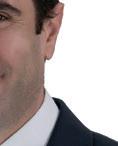




ILAN MIZRAHI CEO Fundpartner Solutions CH
“ The L-QIF represents a fantastic opportunity for the Swiss market and for institutes like ours to expand our range of products ”
safeguards to guarantee the safety of the vehicle. We are thinking here in particular of the requirements to designate a regulated establishment for fund administration (fund management under Swiss law) and the delegation of management can only take place with a collective asset manager. The institutes will also be subject to duties of information and transparency towards investors. The documentation must describe and give indications on any investment strategies, investment techniques or constraints applicable to the fund. It will be key for the institutes responsible for administering the L-QIF to become aware of the important role they play in guaranteeing and complying with regulatory requirements, as the fund is not subject to Finma supervision.
What are some key aspects of the Raif?
B. R. On the Luxembourg side, a Raif is not subject to authorisation/supervision of the CSSF [Financial Sector Supervisory Commission] and must be managed by an authorised alternative investment fund manager (AIFM). Due to the necessity for the Raif to be managed by an authorised AIFM, it is indirectly supervised through the prudential supervision exercised by the competent authority of its AIFM.
A Raif can be offered to well-informed investors--in short, (i) professional and institutional investors and (ii) sophisticated retail or private investors if they subscribe for at least €100,000. The Raif law allows full flexibility with respect to the assets in which a Raif may invest but is subject to risk diversification requirements.
It can take the form of an FCP, a public limited company (société anonyme), a partnership limited by shares (société en commandite par actions), a common limited partnership (société en commandite simple), a special limited partnership (société en commandite spéciale) or a private limited company (société à responsabilité limitée). Raifs are subject to an annual subscription tax (taxe d’abonnement) charged at an annual rate of 0.01% based on the total net assets of the Raifs (unless it has opted for the Sicar tax regime and invests in risk-capital). The Raif is required to publish an audited annual report and an offering memorandum.












BENJAMIN ROSSIGNONElvinger Hoss Prussen
“ The Raif is still the vehicle of choice for Swiss managers looking to combine contractual freedom and short time-to-market ”
How does the L-QIF compare to Luxembourg’s Raif?
B. R. Like the Raif, the L-QIF is not subject to regulatory approval or supervision which allows to improve time-to-market and makes it more attractive for fund managers. A Raif must be managed by an AIFM and the Alternative Investment Fund Managers Directive (AIFMD) requires that authorised AIFMs ensure that the AIFs they manage comply with the AIFMD product rules--in particular rules on delegation and AIFMD depositary regime.
I. M. It is not easy to compare the two vehicles intrinsically… The Raif facilitates the creation of funds for alternative strategies and private investments--private equity, private debt, etc. The L-QIF, although not a direct competitor, offers an alternative in Switzerland to also consider the emergence of this type of vehicle and strategy. L-QIFs do not require Finma approval but must still meet certain compliance requirements. They have, however, been specifically designed to respond to the growing sophistication and expertise of certain investment professionals.
Both vehicles aim to improve time to market and flexibility for well-informed or qualified investors under Swiss law. Current regulations in Luxembourg in particular and soon in Switzerland facilitate this objective. A systematic analysis of the specific needs of each of our clients must be carried out to determine which fund solution should be put forward, taking into account different criteria such as the need for marketing the product, tax aspects, circle and domicile. investors, asset types, etc.
In your opinion, does the Swiss L-QIF pose a serious competitive threat to Luxembourg’s Raif?
B. R. The Raif benefits from both (i) the passport of its authorised AIFM for marketing to professional investors within the EU and (ii) the AIFMD rules (which aim to provide transparency and protection to investors). This is, in our view, the key difference with the L-QIF which does not benefit from such rules, in particular the passport for marketing in the EU. As a result, the creation of the L-QIF does not
constitute, from a Luxembourg perspective, a competitive alternative to the Luxembourg Raif.
In our view, the Raif is still the vehicle of choice for Swiss managers looking to combine contractual freedom and short time-to-market together with both the protection of the AIFMD framework, and the marketability of an investment vehicle benefiting from an EU passport.
I. M. The L-QIF represents an alternative to funds regulated in Switzerland, making it possible to improve the time to market while benefiting from a very liberal regime in terms of management constraints, the fund not providing for investment prescriptions or requirements in terms of risk distribution rules. Establishments must, however, guarantee at all times compliance with the rules of the L-QIF, particularly in terms of transparency and information to investors and monitoring of product risks. The L-QIF differs from existing Finma-approved funds through its flexibility in terms of asset classes and investment strategies. It represents a fantastic opportunity for the Swiss market and for institutes like ours to expand our range of products and deploy new fund solutions.









The EU is set to introduce an ESG rating agency regulation before the European elections. Delano discussed how ESG ratings may develop and whether the new EU rules will increase investor confidence in sustainable investments with experts at Sustainalytics, an ESG rating provider, and the consultancy PWC.
WORDS SYLVAIN BARRETTE







 SVETLANA GRISHANKOVA
Subject matter expert on ESG ratings PWC
SVETLANA GRISHANKOVA
Subject matter expert on ESG ratings PWC
“ESG ratings serve as a compass for investors”
In an effort to increase investor trust in sustainable products, the European Council and European Parliament reached a provisional agreement (PA) in February. The parliament is expected to vote on the text in April. The regulation will take effect 18 months after the parliament and council agree on the final version.
Why are ESG ratings so important?
“ESG ratings serve as a compass for investors, guiding them toward sustainable investments and infl uencing corporate behaviour... companies with strong ESG practices are often better equipped to manage risks related to climate change, regulatory compliance and reputational damage,” said Svetlana Grishankova, subject matter expert on ESG ratings at PWC Luxembourg.
Kenny Panjanaden, ESG & sustainability partner at PWC Luxembourg, thinks that a stronger framework for ESG rating providers should serve as a deterrent against undesirable practices and foster trust in sustainable products. Besides, the endorsement of non-EU ESG ratings by EU-regulated entities will make the “EU
regulation the global standard,” said Arthur Carabia, director, ESG policy research at Morningstar Sustainalytics.
“We need to explain to Brussels our added value... and I hope that we will achieve some kind of partnership with regulators so that they better understand the way we are organised and our usefulness,” said Carabia. He thinks that more generalised transparency and reaching out to other stakeholders beyond institutional investors will benefit ESG rating agencies and the public.
PWC drew several parallels between the PA and the credit rating agency regulations. In a recent report, it wrote that the new regulation will improve transparency, accountability and reliability in an “ESG rating ecosystem.” Consequently, the firm expects the new regulation “to enhance investor confidence by providing standardised criteria and greater accuracy and consistency in ESG ratings.”
Not all is blue sky in the regulation. Carabia would have preferred the regula-
tion to account for the rationale of a change when requiring ESG rating providers to inform the rated entities 48 hours before a rating change on the back of any factual errors. For instance, he does not understand why a rated entity should be notified when the rating change is based on the fact-based ruling from a court of justice. Moreover, he noted that the response rate is around 50% as several entities simply do not have the capacity to respond in a timely manner.
Several investors have been annoyed by the ESG rating gaps between the agencies, making it a challenge for sustainable funds or mandates to invest in sustainable companies but also to explain the rating differences to their clients.
Grishankova explained that contrary to credit rating agencies, which aim to assess the probability of default, ESG rating definitions are different from one provider to the other. The regulators “are not going to unify the methodologies,” categorically said Grishankova.
ESG ratings may score “financial risk, double materiality, impact, etc,” said Carabia. He thinks that the avoidance of a debate on methodologies is a gain as the market is not mature enough and it keeps the politicians out of the process. Besides, the avoidance of the imposition of double materiality is also positive because investors do not want to implement the concept in every financial product.
PWC thinks that “models and methodologies will remain different and provide sufficient differences versus competitors.” Consequently, the nightmares of some investors will unlikely abate.
Grishankova thinks that the regulation will make it easier to compare methodologies, processes, the source of data and to understand what the ratings are attempting to measure and how often they will be reviewed. Intellectual property should also be protected, according to Carabia, as transparency has been fairly calibrated for clients and the public.
Importantly, the regulation will require that ESG rating providers publish their methodologies on their website, a matter that was reflected through
an amendment of the Sustainable Finance Disclosure Regulation.
Panjanaden thinks that there is “a virtue to focus on one letter”. For example, CDP--an NGO formerly known as the Carbon Disclosure Project--focuses on environmental matters and enables rating providers to “specialise, offer tailored solutions, do innovative research” resulting into “accurate assessments aligned with the sustainability objectives of the stakeholders.”
Grishankova believes that investors with a low level of expertise would be interested by overall scores and then apply threshold to determine the investable universe, e.g., not lower than a D rating. Confirmed by Carabia’s observations, she noted that the most sophisticated investor will rather bypass the MSCI overall rating and instead access MSCI’s database to capture and optimise their internal model to limit certain undesirable risks.
Carabia stated that his firm--as for its competitors--does not want to offer a black box but rather present “maximum granularity... in an extremely detailed report… and in the score.”
Grishankova observed that informed investment decisions are better served through the capture of separate events at the letter level, such as a “huge environmental event” which may be diluted at the overall ESG level.
“Sophisticated investors know exactly where they want to have a positive contribution… E, S or G… and they want to know if accomplishing this objective might make them harm another sustainable objective,” stated Panjanaden.
Grishankova noted that stakeholders struggled with non-EU ratings under the CRA regulation. It will come as no surprise that the “endorsement mechanism [as per the PA] is very complicated indeed… but I think it would be implemented in a relatively similar way [as CRA regulation].”
The intent of the regulation is to ensure that ESG ratings published outside the EU--even in the same group where the headquarters is generally based outside
Deloitte counted more than 600 ESG rating providers in a global survey. A study by ERM, a sustainability consultancy, found that companies spent between $210,000 and $480,000 each year to receive an ESG rating. Investors spent between $175,000 and $360,000 for access to ratings and data.the EU--are signed off by its regulated EU entity and are accountable for the ESG rating published in the EU. The unstated reason for the implementation of the mechanism was to ensure that the EU regulation would equally apply to the dominant non-EU players.
Besides, the endorsement regime requires the partnered rating agency to be based in a country where there is a regulatory regime equivalent to the EU. In other words, the endorsement of a rating assigned in Russia or China would not be possible as they are “obviously not equivalent,” according to Grishankova.
A definition of a small player is “not indicated in the current regulation,” said Panjanaden. Looking at the CRA regulation as a good guesstimate, PWC observed that credit rating agencies raking in revenues beyond €10m are generally required to pay supervisory fees to the European Securities and Markets Authority.
Elsewhere, CRA regulation which relates to securitisation, defined a rating agency with a market share under 10% as ‘small’. The jury is out on the rule that will govern smallness in ESG ratings. It may be reported later in a technical standard published by Esma.
Panjanaden does not think the large players will lobby against the favourable treatment for small players, as he thinks that they do not have oligopoly ambitions. He believes that the goal for the regulator is “to diversify and to grow [the business] and then to [foster] innovation. With smaller entry barriers, the regulator may also want to see “startup companies to enter the market,” thinks Grishankova.
Carabia is not so sure. He remembered that investors were pushing hard for a regulation that would avoid market concentration. Despite the various exemptions and the phase-in period for smaller outfits, he thinks that the regulation will add a cost layer for the small players that may fall anyway in the arms of large players annihilating the initial goal.
Even worse, Carabia heard that the mid-sized players are concerned that dual-speed regulation may tempt investors to go for the providers that fully com-





ARTHUR CARABIA Director, ESG policy research Morningstar Sustainalytics
“Rating providers will have to disclose, manage and explain the conflict of interest“
ply with the regulation to protect themselves legally. He thinks that the outcome may serve his firm well after it already acquired several small firms that filled several gaps in their approach. He noted that a code of conduct is sometimes preferred in the UK or Asia, as the authorities are concerned about going too far with a regulation.
“Strict legal separations were initially envisioned by the authorities,” observed Carabia. Instead, he noted that the PA now suggests that “rating providers will have to disclose, manage and explain the conflict of interest to Esma.” He expects synergies between their index and ESG rating businesses, as clients for both products are the same. Interestingly, Carabia concluded that there are no conflicts to manage between ESG ratings and DBRS, an inhouse credit rating agency, “given their distinct businesses.”
Grishankova observed that some ESG rating providers--such as Preqin and Reprisk-are using AI in their methodology. The PA stated that “where applicable, an explanation of any AI methodology used in the data collection or rating process” will be required. She expects more clarity on the topic in due course.
Carabia thinks that the non-involvement of the regulator on the methodology will also help the market to react more rapidly on new non-financial risk related to AI, for instance.
Amendments expected
A double standard may develop for data providers and ESG rating providers using their proprietary data, as the former will not be covered by the regulation. Indeed, “the providers of ESG data have similar or even greater market influence as ESG rating providers and should also be subject to transparency requirements,” stated Grishankova.
MSCI declined to be interviewed for this article.
Luxembourg’s private banks currently manage a staggering €600 billion in assets. However, the private banking sector is undergoing a significant transformation. While digital services take centre stage, personalised advice remains a priority for high-net-worth clients. Artificial intelligence provides accurate market predictions, while automation leverages big data
to streamline trading operations... Dive into the private banking of tomorrow with this round table discussion.
With the participation of Ananda Kautz (ABBL), Pascal Martino (Deloitte).
London and New York may be hubs for money management, but so is the grand duchy: here are four locally based portfolio managers and snapshots of their workplaces and backgrounds.
PRINCIPAL, ARES MANAGEMENT
Asked about career inspiration, Hilary Fitzgibbon recalls working in Dublin during the “Celtic Tiger” era, Ireland’s boom years around the turn of the century: “I got to experience working in several new jurisdictions across Europe and learning new ways of doing things.” She came to Luxembourg in 2010 and now works in Ares’s multicultural--25 people but 17 nationalities-office in Limpertsberg. Most underrated part of living in Luxembourg? Seeing bands in small venues. “Being so close really adds to the ambience!”



“I’ve found that taking initiatives and demonstrating ownership is not only encouraged but also wholeheartedly backed,” says Yuan, describing her workplace, where she started in 2015 after finishing a master’s in finance from the Grenoble Ecole de Management. “Luxembourg is remarkably inclusive,” she says, asked what the most underrated part of working in grand duchy is, adding that the country is quick to adapt to new trends, making it ideal for both personal and professional endeavours.

Founded in 2008--by Gregory Fayolle--Oraxys focuses on European SMEs working on environmentally friendly products or services. These firms and their management teams (and production sites) need visiting, however, which is why Fayolle spends about half of his time travelling. But Luxembourg is a good place for this setup, he says--and when it comes to balancing career opportunities with an enjoyable personal life, he adds, the grand duchy beats out the likes of Paris, Frankfurt and London.

“Our workplace is cosy yet dynamic,” says Carlo Stronck, who works in a renovated 100-year-old house with space for just 25 people. “The energy here is inspiring, fostering collaboration, innovation and a strong sense of camaraderie.” Stronck started at the Spuerkeess in 1999 after completing a master’s in economics in Strasbourg. “I gradually climbed the ladder through dedication and continuous learning,” he says.









Michel Nickels, partner at Elvinger Hoss Prussen, reviewed with Delano the various elements to consider when assessing rent increases: invested capital, frequency of adaptation, indexation clauses, luxury rentals, process to lodge a dispute with the Rent Commission, participation of an expert and eviction of a tenant.
Interview SYLVAIN BARRETTE“The lease contract can be adapted every two years whereas the rent can move up or down,” Michel Nickels, partner at the law firm of Elvinger Hoss Prussen said during an interview. He explained that the rent level may not go beyond 5% of the invested capital (‘capital investi’ in French). It is important to note that “house leases are subject to the law of 21 September 2006.”
“Contrary to a commercial leases, for instance, the law of 2006 forbids indexation clauses (clauses de valeur)… even if it is included in the rental contract.” He explained that the tenant can therefore oppose the application these clauses.
On the other hand, the indexation of luxury flats (above €2,500 per month) is
permitted as per the same law. However, a draft bill currently being reviewed in parliament “is expected to drop the notion of luxury rentals.” Moreover, the concept of invested capital is not applicable to luxury flats. Luxury dwellings are not a trivial matter, as renting a house can easily reach €2,500 in Luxembourg.
Illustration of the process
Let’s take one scenario: Rent on a flat is set at €1,000 and is increased to €1,200 two years later. If the rent is less than 5% of the invested capital, the increase implemented by the landlord is legally possible, even if the rent is up 20%.
Should the tenant believe that the new rent reflects a level above 5% of the
“The tenant is not in a position to calculate the invested capital as the documentation lies with the landlord”
invested capital, they are entitled to ask their municipality’s Rent Commission (Commission des Loyers) to calculate the level of the invested capital as described in the law after receiving all the documentation from the landlord.
Should the commission conclude that the corresponding rent after its calculation of the invested capital is €2,000, it will rule that the rent increase is admissible. However, the landlord will not be able to increase its rent beyond the initially requested €1,200. The landlord will have to wait two more years before wrequesting a rent higher than €1,200.
The commission has a conciliatory power and aims at reaching a compromise between the parties. “It is generally more complicated than that as the parties are generally having those compromise discussions before the commission meets,” observed Nickels. Only after going through this process can the parties go to court to challenge the calculation of the Rent Commission and the rent change.
Only the commission may validate the calculation of the invested capital, and then the court should the conclusion of
the commission be challenged by one or both parties. “The tenant is not in a position to calculate the invested capital as the documentation lies with the landlord.”
It is recommended that the tenant send a registered letter to the landlord to validate the contestation. Nickels thinks that sending an email to the landlord that generates an acknowledgement of receipt is unlikely to be rejected by the courts.
The tenant may file a request to the commission to review the rent if an agreement between the parties has not been reached within a month after informing the landlord.
Importantly, the current law states that increasing rent by more than 10% must be spread over three years. This mechanism kicks in only when the case is submitted to the commission or the court. According to Nickels, the current draft bill proposes not to increase the rent by more than 10% every two years, an outcome that would better protect tenants.
The Nickels explained that the ‘Limpertsberg case’ is famous given the rent requested by the tenant (€300) against the current rent (around €1,600). The case also revealed the calculation of the invested capital is “excessively complicated,” especially when the expert does not have all the elements to perform the calculation. He believed that the case is still in front of the courts.
Landlord documentation
Should the landlord not be able to provide the full documentation to assess the invested capital, an expert may be called upon to assess its level. Nickels noted “that if the calculation of the expert were disproportional to the market valuation, the commission may be authorised to assess the level of the invested capital according to various elements.” He added: “The process is much more complicated than simply asking an expert who would look at the valuations in the vicinity of the flat.”
The landlord must show good faith by providing documentation as “if there is no invested capital, there is no reference points” and no rent increases. Should the information not be available, the landlord
Whether the rental is for an indefinite period or is under a yearly automatic renewal regime, a landlord can only retake possession of a flat due to 1) a personal need; 2) fault of the tenant (e.g., non-compliance with obligations); or 3) other serious and legitimate reasons: major work making the accommodation uninhabitable.
Nickels thinks that the landlord claiming the third reason for repainting the building is not a sufficient reason to expel a tenant. Importantly, the tenant may request an explanation on the nature of the work undertakings. Should the work not be executed, the tenants may demand damages from the landlord.
and/or the tenant then need to reach out to an expert.
The draft bill proposes to display the invested capital directly into the rental contract, “a big problem for the landlords,” noted Nickels. “Without it, the rent would be capped to €8/m2, a very low level compared to current market levels.”
“It is likely that the rent for old buildings can reach 5% whereas it is more likely to reach 3.5% for recent constructions,” stated Nickels. He explained that should you have invested €1m for an apartment, it is unlikely that you will find a tenant for a rent as high as €4,166 (€1m X 5% / 12 months). Yet it also means that the landlord has more space to increase the rent.
Interestingly, Nickels noted that the draft law suggests an invested capital limit of 3% for low energy saving class dwellings whereas it could go up to 3.5% for “class A” units. He thinks that it may incentivise landlords to renovate their buildings. Landlords should not panic with the proposed 3%-3.5%. The legislator has also reviewed the tables so that the valuation of older buildings will be increased, which will somehow offset each other out.
Nickels does not think there are major disagreements on the current draft law. The ministry of housing and spatial planning used to be run by the Greens. “It is unclear whether the new government will maintain the provision regarding the energy passport.” The maintenance of the previous elements and the timing of its adoption remain uncertain.
The tenants’ rights group Mieterschutz Luxembourg could not respond before our deadline. Georges Krieger, president of the Luxembourg landlords association, declined to participate in this article.
Rédacteur en Chef Paperjam Suppléments (m/f/x)
Journaliste & Spécialiste IA (m/f/x)
Event Coordinator (m/f/x)
Michael Delano
, asset &
wealth
management leader at PWC Luxembourg, says that it’s key for people to understand the risks of investing. And when it comes to the younger generation, learning about the importance of saving and being selfsu icient is crucial.Words LYDIA LINNA
“It’s a good question,” is Michael Delano’s response when I ask him about his first investment. Delano was featured in the very first edition of our magazine (released in February 2011), and we thought it would be fitting to include him in the 101st edition as well.
“My first real investment--coming out of school, getting my first job--it was investing into a 401K.” In the US, a 401K is a retirement savings plan where employees’ tax-exempt contributions come directly out of their paycheques. “It’s a typical, American answer. It’s probably most people’s first investment.”
As soon as he started making money, his parents encouraged him to start saving. “The 401K in the US makes it pretty easy to start doing that.”
That being said, Michael Delano has been in Luxembourg for 17 years now, and the 401K isn’t something that exists here in Europe. What else has he invested in?
“My fi rst investment outside of 401K was Apple,” Delano replies. “I don’t want to make an Apple commercial, but I bought Apple stock. I like the products, I like the messaging from the company.”
Michael Delano mentions that as he prepared for our interview, he thought about who would be reading this, and, in particular, about the younger generation who would be looking to save.
“My advice to the younger generation looking to invest would be to really understand the risks of the investments that you’re getting into. And to know the difference between what I can save for the long term and what I can really take risks on.”
Importance of saving early on Michael Delano and his wife are both American, and he adds that they’ve started savings accounts for their kids and invested into low-cost mutual funds. “We’re trying to drill into them the importance of saving.”
“I think kids nowadays are used to looking to mom and dad to bail them out,” he says. “I think it’s better to be a little bit more independent, to be self-sufficient, and to understand that you need to have a little bit of money set aside in a relatively safe, stable investment.”
“Think about investing sensibly” For people looking at their first investment, it’s really about “understanding the risks of what it is you’re getting into.”
“There’s also a big push around managers--particularly alternative managers-looking at retail investors for Part II funds, for Eltifs [European long-term investment funds], etc. I think those definitely do have a place in your investment portfolio. But they shouldn’t be 100% of your portfolio. And the younger you are, the more risks you can take because
you’ll make money over a longer period of time, so you can do that,” he concludes. “But again--just think about investing sensibly.”
“I think it’s better to be a little bit more independent, to be self-su icient ”
MICHAEL DELANO Asset & wealth management leader PWC Luxembourg




 Photo Olivier Toussaint/PWC
Photo Olivier Toussaint/PWC


Luxembourg City
18:30-22:30



Registration at 25.04.2024




Since 2000, Paperjam has been celebrating the ideas, projects, and individuals who advance Luxembourg: entrepreneurs, decision-makers, influencers. Just when we thought we had covered almost everyone, it becomes clear that there are still paths that have slipped under our radar. So, in April 2024, Paperjam dedicates an edition to them, the day before its publication. These leaders will be present on stage.


Afterwork Show - Walking Dinner - Deejay - Dress up



The Casino Luxembourg has two exhibitions on display. “Forced amnesia” takes inspiration from digital techniques and video game creatures, while “Images at work” explores the mechanics, routines and experiences of labour.
Until Sunday 28 April Luxembourg City ↳ casino-luxembourg.lu

Relais pour la vie is an annual charity event that raises money for Luxembourg’s cancer foundation. Teams walk or run a combined 24 hours. Cheer on friends, make a donation and support cancer patients and their families.
The exhibition at the national museum of art and history puts human figures and portraits by the Luxembourg artist Joseph Kutter in the spotlight. The centrepiece is “Le Champion,” which was acquired thanks to crowdfunding.
Until Sunday 1 September Luxembourg City ↳ nationalmusee.lu
Saturday 23 March & Sunday 24 March Coque & online ↳ relaispourlavie.lu

This traditional folk festival takes place every year on Easter weekend, with the market on Easter Monday the main highlight. Buy handmade Péckvillerchers (bird-shaped whistles), watch potters at work and enjoy concerts.
Monday 1 April
Nospelt & Luxembourg City visitluxembourg.com


Here’s an opportunity for your children to climb on a 14-metre wall! Under professional guidance, kids will learn basic safety and climbing techniques. No experience is required, but book in advance as places are limited.
Tuesday 2 April & Thursday 4 April
Echterhach Youth Hostel youthhostels.lu

At the traditional Wäimoart in Grevenmacher, winegrowers from the Moselle region present new wines from the latest vintage. You can be among the first to taste (and purchase) these wines and crémants.
Friday 5 April
Grevenmacher visitluxembourg.com

The 23rd edition of the duck race--featuring activities for kids, a DJ and food stands--will kick off at noon at Neimënster. All proceeds will go to charities that support the wellbeing of children in need.
Saturday 20 April Luxembourg City ↳ duckrace.lu


Wine growers, wineries and museums invite you to discover their cellars, gardens and terraces. Taste wines and crémants, try culinary specialties and enjoy music, art exhibitions, poetry readings and guided walks.
Sunday 19 May
Moselle River Valley ↳ visitmoselle.lu

The British Ladies Club is organising the 30th edition of its annual car boot sale. Buy or sell clothes, toys, bikes, books, furniture, jewellery, plants and more. Proceeds from the event are donated to charity.
Saturday 18 May
Adenauer parking, Kirchberg ↳ blc.lu
Every Whit Tuesday, the traditional “Sprangpressessioun” takes place. Pilgrims celebrate by hopping to the rhythm of musical bands. The procession has been on Unesco’s intangible heritage list since 2010.
Tuesday 21 May Echternach ↳ mullerthal.lu

Dear members,
Engage and connect with leaders and innovators at our upcoming business club events:
Discover the 10x6 Leading CIOs’ Challenges 2024 event on 26 March 2024 at Kinepolis Kirchberg. Gain insights into the pressing challenges confronting chief information officers (CIOs) in today’s rapidly evolving technological landscape.
Experience the 10x6 New European Bauhaus event on 24 April 2024 at Luxexpo The Box. Immerse yourself in the cutting-edge trends and visionary concepts shaping the future of architecture and design across Europe.
Explore Private Banking Innovation on 15 May 2024 at Arendt House. Delve into the transformative impact of digital technologies on private banking services, and discover how personalised client experiences are redefining the sector’s landscape.
“ Progress happens when we focus on what we share”
Jana Degrott We Belong

1 Nasir Zubairi (The LHoFT)
2 Juvie Hettich et Courtney Jayd (The Loft)
3 Joao Varandas (C Partners Group)
et Karine Fernandes (Carihome)














4 Lachezar Petrov (Select Luxembourg) et Marine Meunier (Agir Luxembourg) Evert Van Camp (Samsung Electronics) et Samuel Morin (Ellipsys)









Don’t miss out on our Academy’s training sessions and workshops designed to further enhance your skills and knowledge. Join us in shaping the future of your industry!



















 MICHEL GREVESSE-SOVET Director Paperjam+Delano Business Club
MICHEL GREVESSE-SOVET Director Paperjam+Delano Business Club














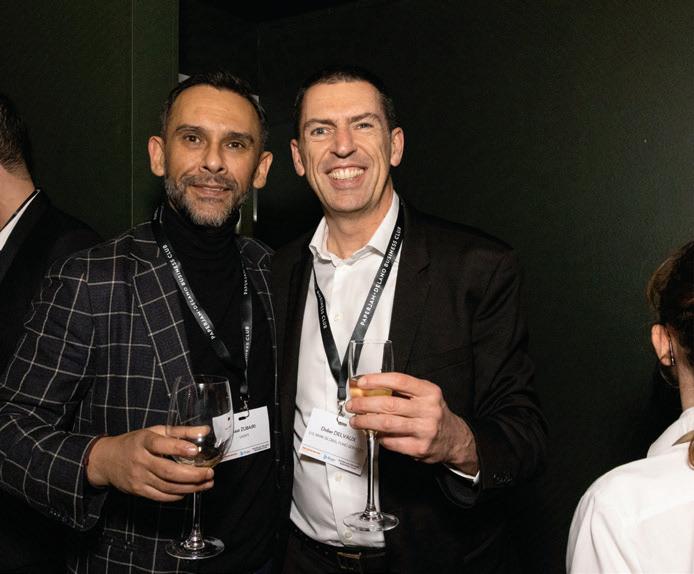

“ Making a real-world impact on climate resilience”
Imeshi Weerasinghe WEO







The Paperjam+Delano Business Club is open to all Luxembourg and Luxembourg-related companies and institutions, whatever their sector of activity or size.

Tuesday 26 March 2024 (18:30-22:30)
Kinepolis Kirchberg
With the participation of Olivier Beaujean (Cargolux Airlines), Laurent Couturier (Armacell), Leandro Cresta (Ferrero Group), Márton Fülöp (PM-International), André Meyer (Encevo), Sabika Ishaq (Grant Thornton Luxembourg), Stefan Okhuijzen (SES), Olivier Ramlot (BIL), Yannick Kirschhoffer (LNS) and Christine von Reichenbach (ADEM).
General Partner: Telindus
Wednesday 24 April 2024 (17:00-22:30)
Luxexpo The Box
With the participation of Sahar Azari (Saharchitects), Julie Conrad (Julie Conrad Design Studio), Marielle Ferreira Silva (Drees & Sommer), Edouard François (Maison Edouard François), Florian Hertweck (Studio Hertweck Architecture Urbanism), Sebastian Moreno-Vacca (A2M Architects), Dave Lefèvre (Coeba), Emma Zimmer (Nouma), François de la Caffinière (Valéan) and Carole Schmit (Polaris Architects).
Wednesday 15 May 2024 (18:30-21:30)
Arendt House
With the participation of Ananda Kautz (ABBL), Pascal Martino (Deloitte) and Nasir Zubairi (The LHoFT).
General Partner: ING Luxembourg
21.03 Let’s Taste: Lëtz Gin ultimate tasting experience
22.03 Thank-God-It’s-Friday: Marketing Lunch
29.03 Thank-God-It’s-Friday: Under 50 Lunch
19.04 Carousel Lunch
19.04 Thank-God-It’s-Friday: Leadership Lunch
26.04 Thank-God-It’s-Friday: HR Lunch
03.05 Thank-God-It’s-Friday: Marketing Lunch
17.05 Carousel Lunch
26.03 Journée de l’Économie Luxembourg’s competitiveness: are we still in the race?
20.03 Advanced Trainings
Booster son middle management (3/6)
Advanced Trainings
Développer et conduire une stratégie RH
Advanced Trainings
Développer sa stratégie commerciale (3/4)
Advanced Trainings
Devenir un recruteur efficace et engager ses collaborateurs (2/3)
Advanced Trainings
Réussir la digitalisation de votre entreprise (2/3)
Webinar
Scale up : ne confondez pas stratégie et exécution
25.03 Webinar
Stratégies Marque Employeur en période de pénurie de talents
26.03 Webinar
Optimisez vos campagnes digitales grâce à l’IA avec Chloé
27.03 Webinar
Why, how & when does change management get you moving?
Our full programme
28.03 Workshops Day
04.04 Scale up Masterclass
sur
Votre newsletter mensuelle à 16.000 abonnés. Une source riche pour les professionnels du secteur et particuliers avertis.


Phone (+352) 20 70 70-150
E-mail news@delano.lu
EDITOR-IN-CHIEF
Aaron Grunwald (-152)
ASSISTANT EDITOR
Lydia Linna (-165)
JOURNALISTS
Sylvain Barrette (-153)
Kangkan Halder (-150)
Dina Jaber (-166)
Jeffrey Palms (-156)
PHOTOGRAPHY
Guy Wolff
Matic Zorman
To contact staff members
SEND AN E-MAIL TO firstname.lastname@maisonmoderne.com
WRITE TO PO Box 728, L-2017 Luxembourg
OFFICES
10 rue des Gaulois, Luxembourg-Bonnevoie
10 avenue de la Liberté, Luxembourg-Gare
PUBLISHING DIRECTOR
Mike Koedinger
EDITOR-IN-CHIEF
Aaron Grunwald
COVER
Serge Ricco
Phone (+352) 20 70 70-300
E-mail brandstudio@maisonmoderne.com
DIRECTOR, BUSINESS DEVELOPMENT
Pierre-Alexis Quirin
HEAD OF MARKETS & BUSINESS
Florence Christmann
SENIOR CLIENT MEDIA OPERATIONS OFFICER
Céline Bayle (-303)
MEDIA ADVISORS
Mélanie Juredieu (-317)
Aline Puget (-323)
Aissa Abeid (-315)
Loïc Collin (-311)
Laurie Cros (-310)
Géraldine Gij (-307)
Marine Kieffer (-308)
Marie Langlais (-325)
Emmanuelle Mitchell (-318)
Jean-Claude Negri (-314)
Valentin Salvino (-315)
Jérôme Schaack (-338)
Barbara Wiesen (-309)
HEAD OF CLUB SALES
Virginie Laurent (-322)
CLUB SALES
Léo Santoro (-335)
Mikaël Spezzacatena (-326)
STUDIO MANAGER
Sandrine Papadopoulos
LAYOUT
Sophie Melai (coordination), Stéphane Cognioul, Juliette Noblot, Louna Simon, Marielle Voisin
Maison
Publisher
www.maisonmoderne.com
Phone (+352) 20 70 70 E-mail publishing@maisonmoderne.com
CHAIRMAN
Hugues Delcourt
FOUNDER, CEO AND PUBLISHING DIRECTOR
Mike Koedinger COO
Etienne Velasti
DIRECTOR, BUSINESS DEVELOPMENT
Pierre-Alexis Quirin
DIRECTOR, BUSINESS CLUB
Michel Grevesse-Sovet
HEAD OF IT
Antonello Di Pinto
HR DIRECTOR
Nathalie Bourdeau
ADMINISTRATIVE MANAGER
Sylvia Leplang
DISTRIBUTION MANAGER
Quentin Marenic
All rights reserved. Any reproduction, or translation, in whole or in part, is prohibited without the prior written consent of the publisher. © MM Publishing and Media S.A. (Luxembourg). Delano™ and Maison Moderne™ are trademarks used under licence by MM Publishing and Media S.A. ISSN 2220-5535
In accordance with article 66 of the law of 08.06.2004 on the freedom of expression in the media, the following statement is obligatory “one time per year, in the first edition distributed”. We have decided to publish it in each issue. The company that publishes Delano is directly held, by a 100% stake, by Mike Koedinger, a publisher registered in Luxembourg. He is chartered with general and daily management.














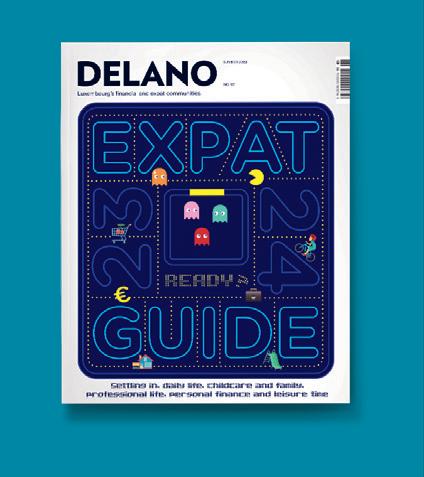
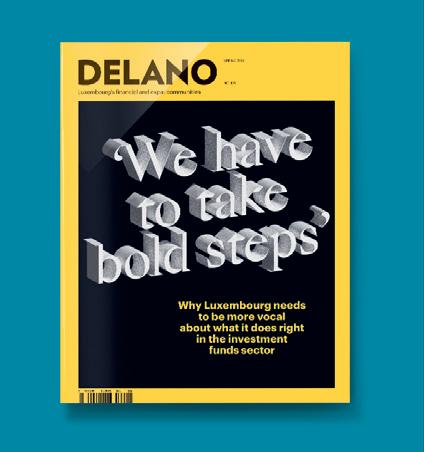





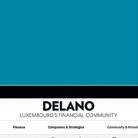





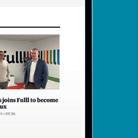


























“The Spot Luxembourg is my go-to place! It gathers all the ingredients for a perfect lunchbreak: Renato’s warm welcome, the chef’s tasty food and my colleagues’ good company!”
“My favourite lunch spot is Athena. I love Greek food and Athena never disappoints. My go-to choices are gyros or moussaka.”


“My top lunch spot? Auchan La Brasserie at Cloche d’Or. It’s a great place for team bonding and has delicious food--all just around the corner from the office.”














































Our distinctiveinvestmentapproach has made us oneofthe world’slargest fixed income managers.
With US$498billion in fixed income assets undermanagement, CapitalGroup is one of thelargest active fixed income fund managers in the world¹ -adistinctiveapproach to fixed income is thedriving force behindthissuccess.
Withthe stability thatcomes from being employee-owned,and fixed income portfolio managers with an average of 26 years’ experience, we are singularly focusedonasset management with atruly long-term perspective.
Seehow we can help youget morefrombonds.